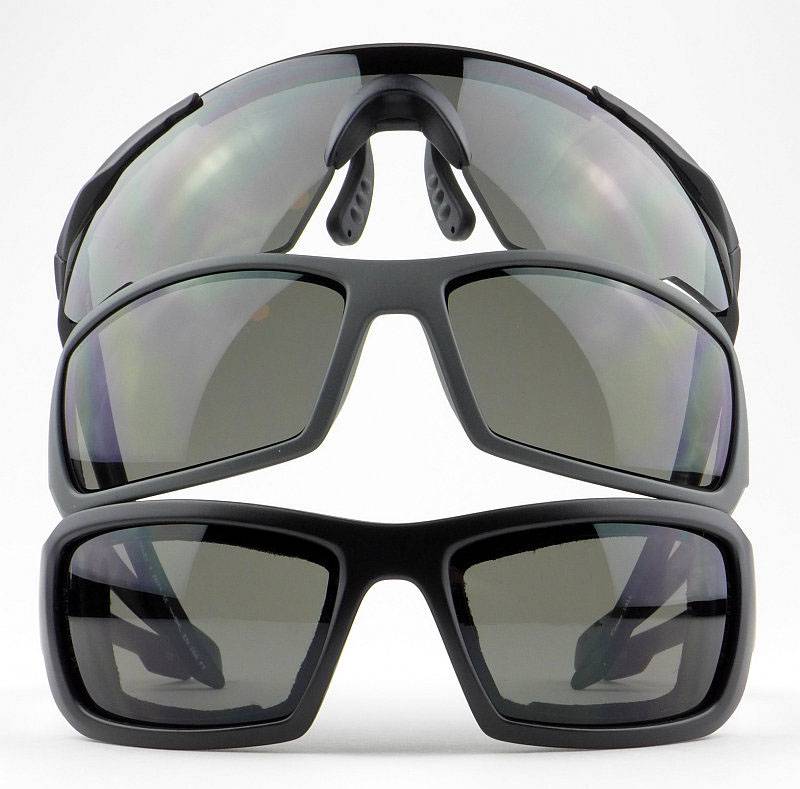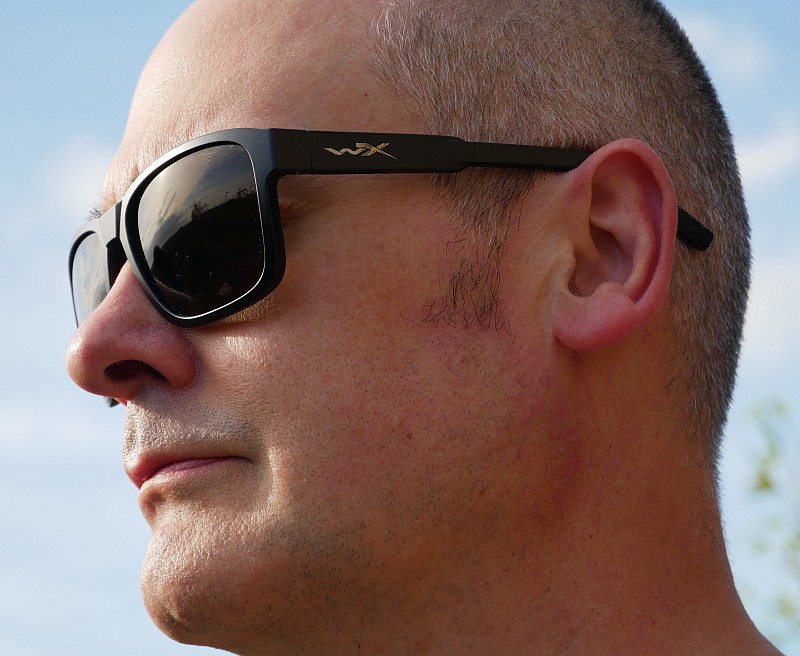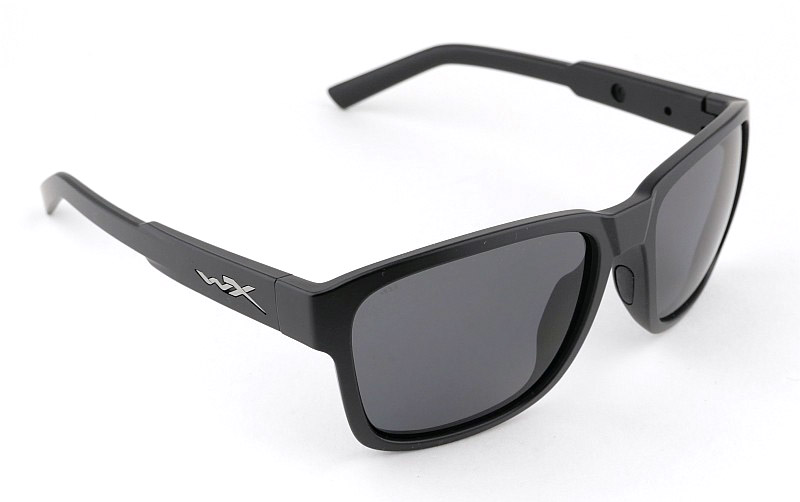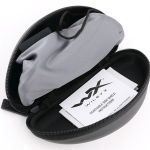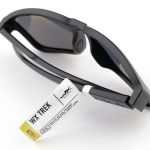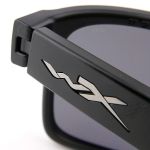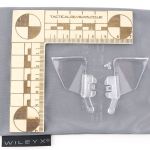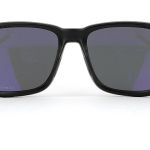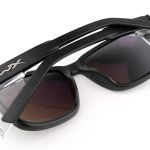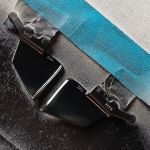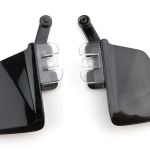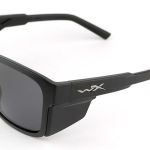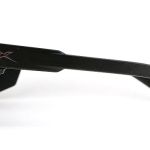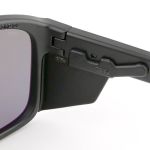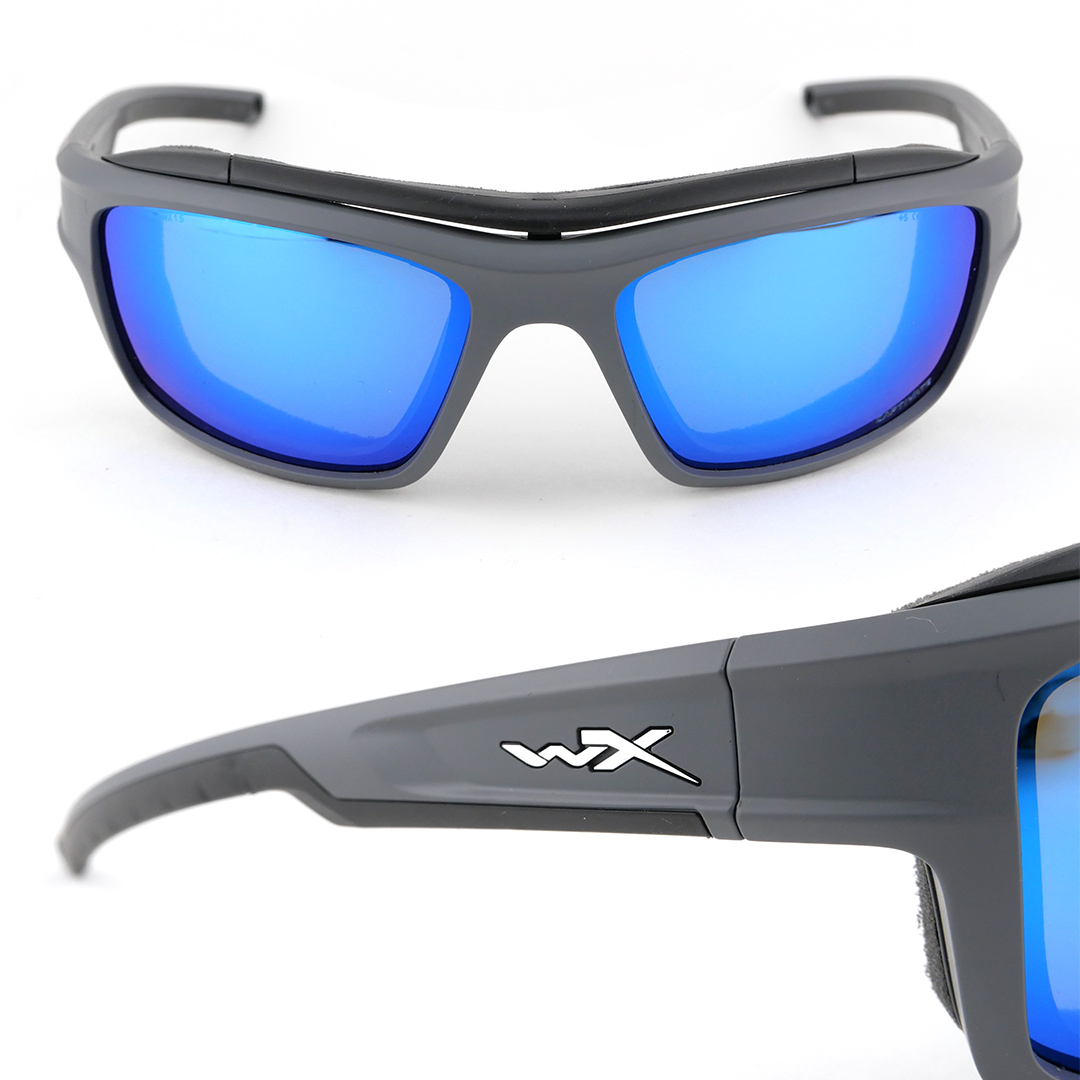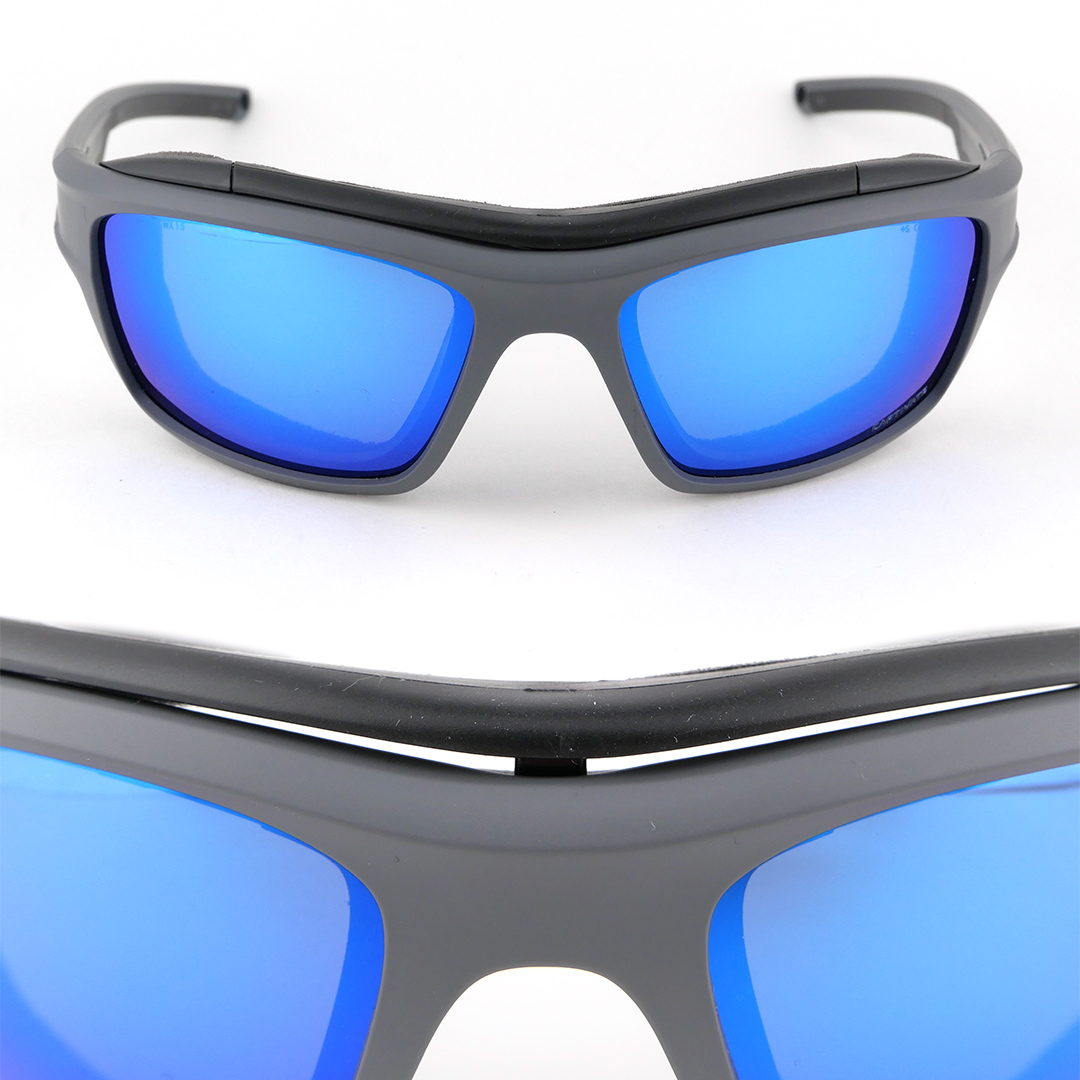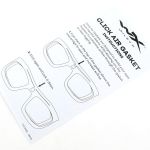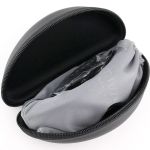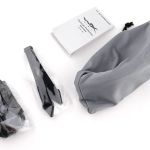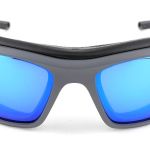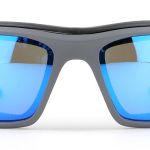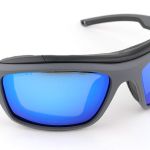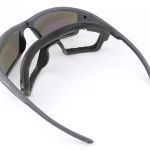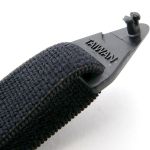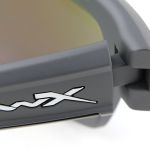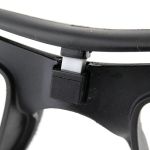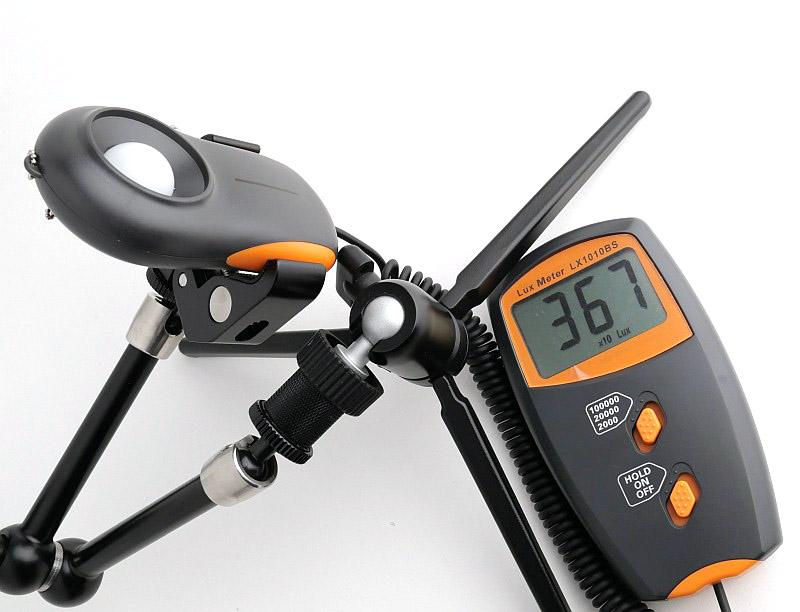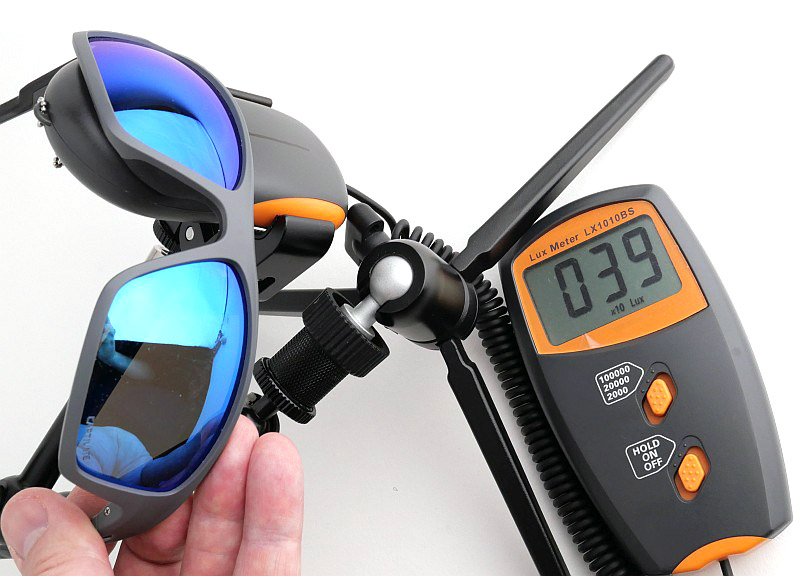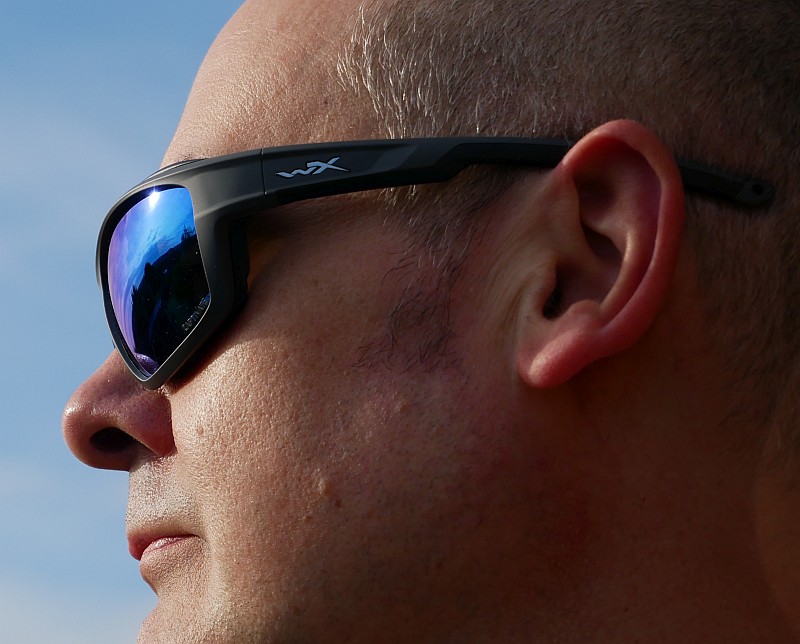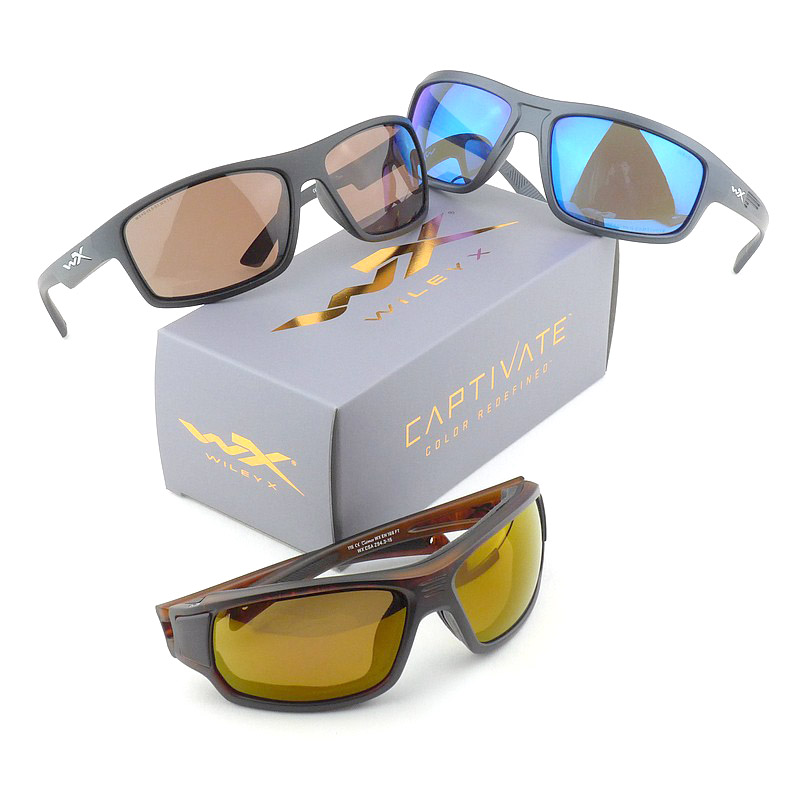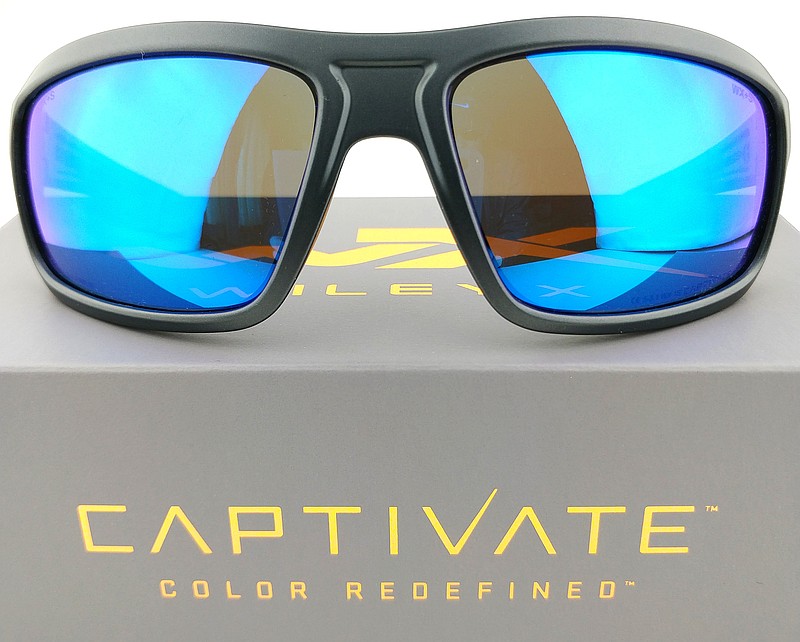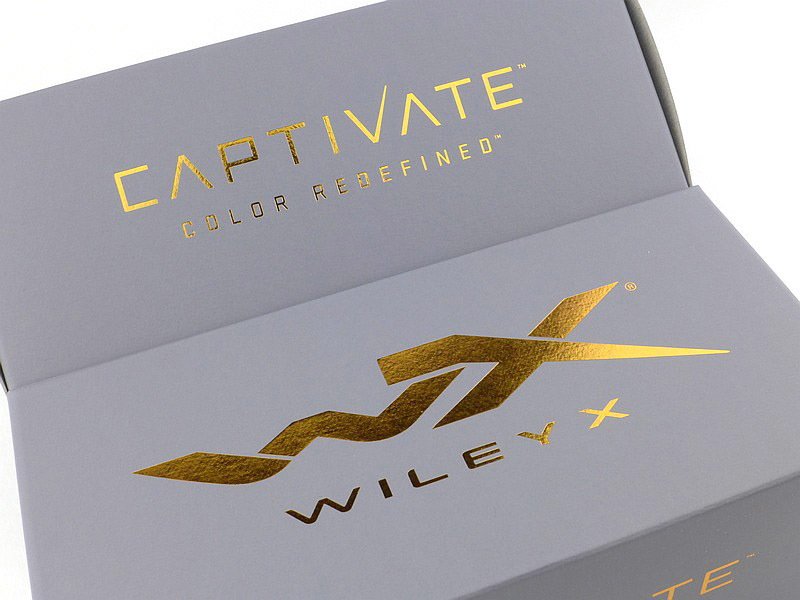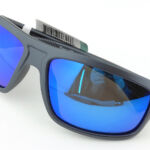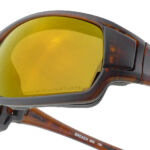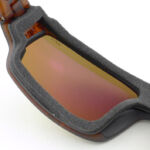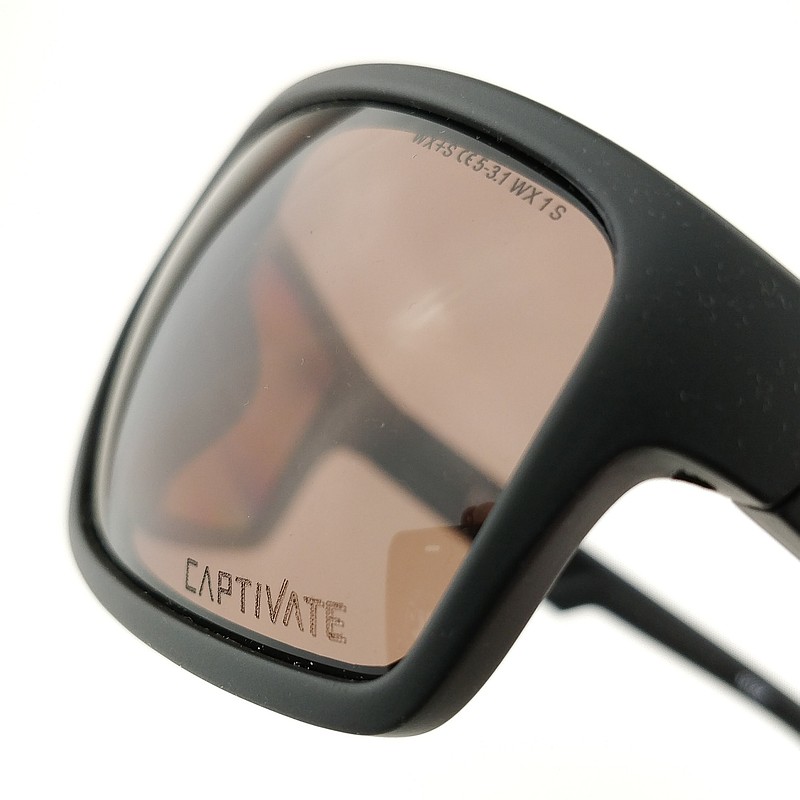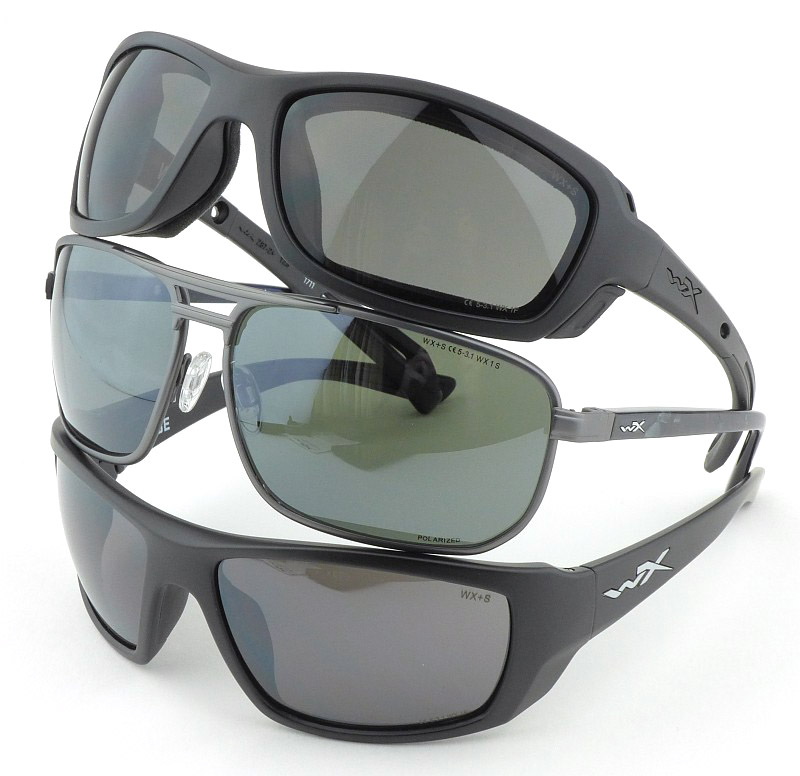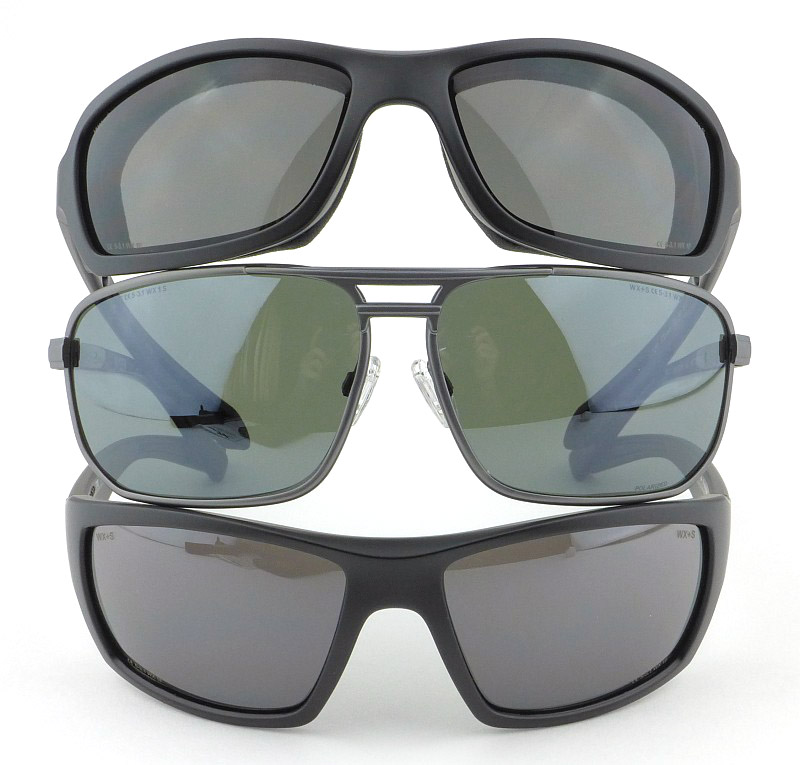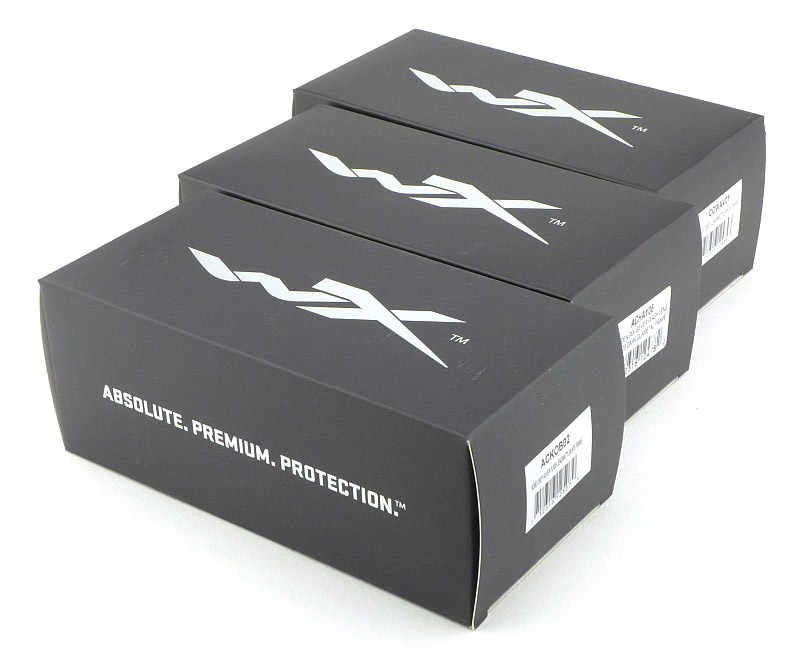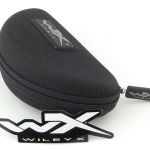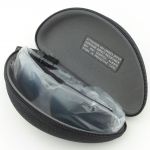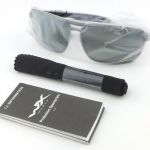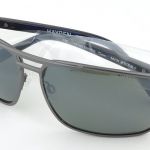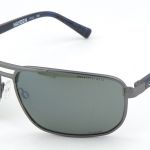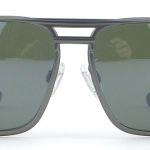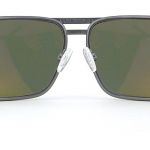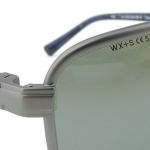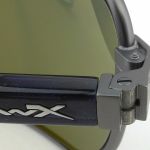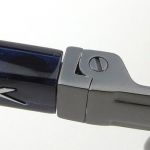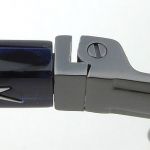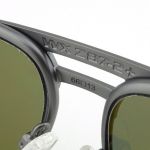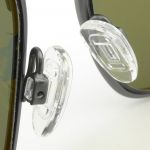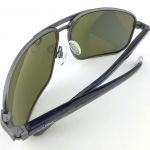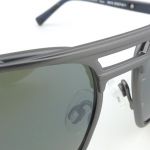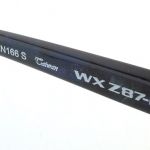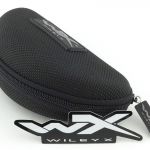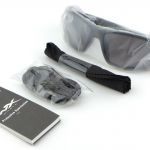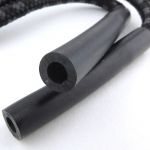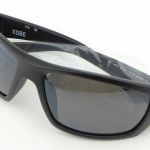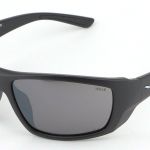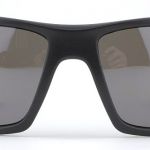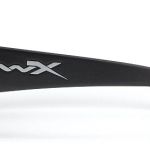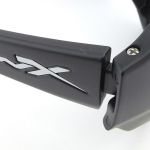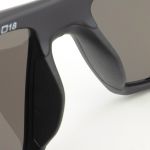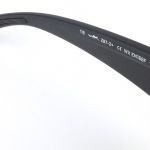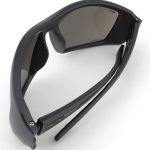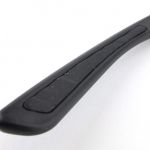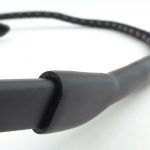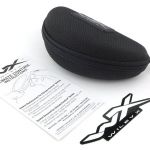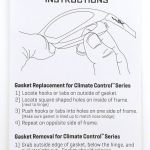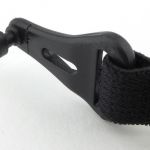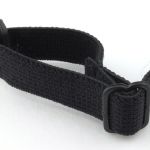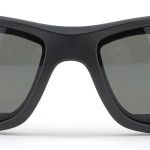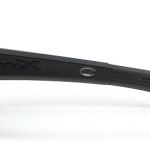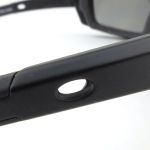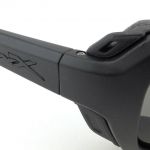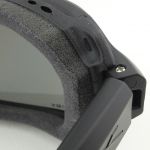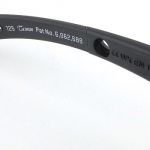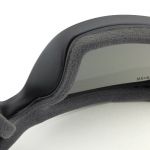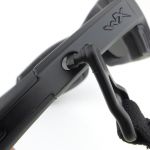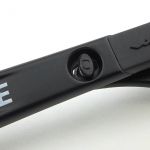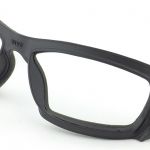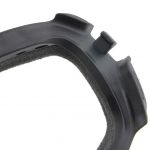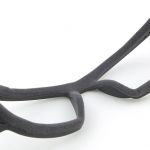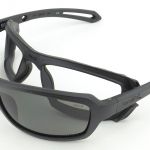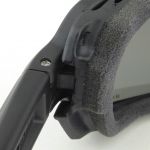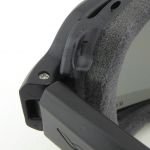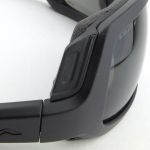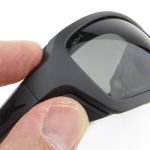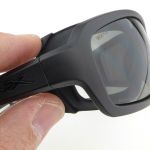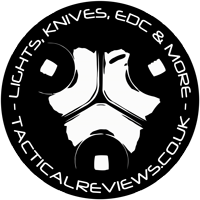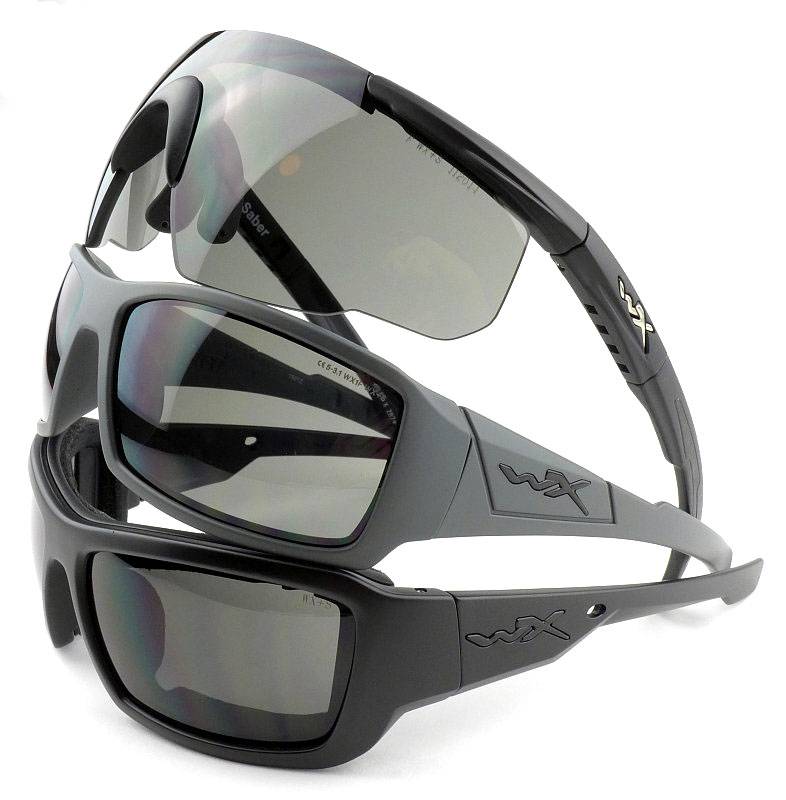
I first came across Wiley X due to the fact they manufacture 5.11 Tactical’s range of sunglasses. It is a real compliment that 5.11 chose Wiley X, and when you see more of what Wiley X make you will understand why they are a brand you can trust if you want protection as well as style.
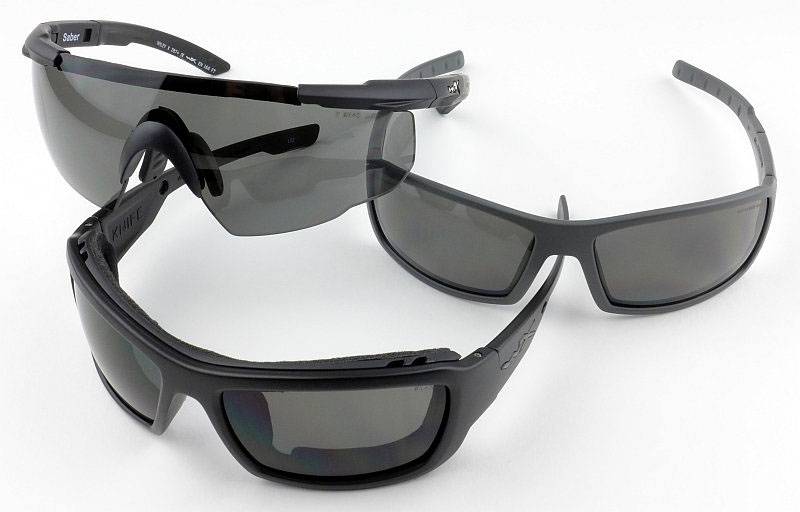
In this group review I’m looking at three very different pairs of glasses showing some of the key benefits Wiley X offer. On test we have the Sabre – wrap around ultra-protective shooting glasses, Twisted – the simplest glasses but in a special Stealth Grey frame, and Knife – using Wiley X’s Facial Cavity Seal making them as close fitting as goggles.
All three are in a non-polarized grey lens aimed at tactical use. For tactical use you want to avoid polarized lenses due to their tendency to cause issues with various device displays – it is just not worth the risk.
There is a lot to show as each of these models have features specific to Wiley X. Many of these features are repeated across the Wiley X range. The models in this MEGA review will help you understand what options you have.
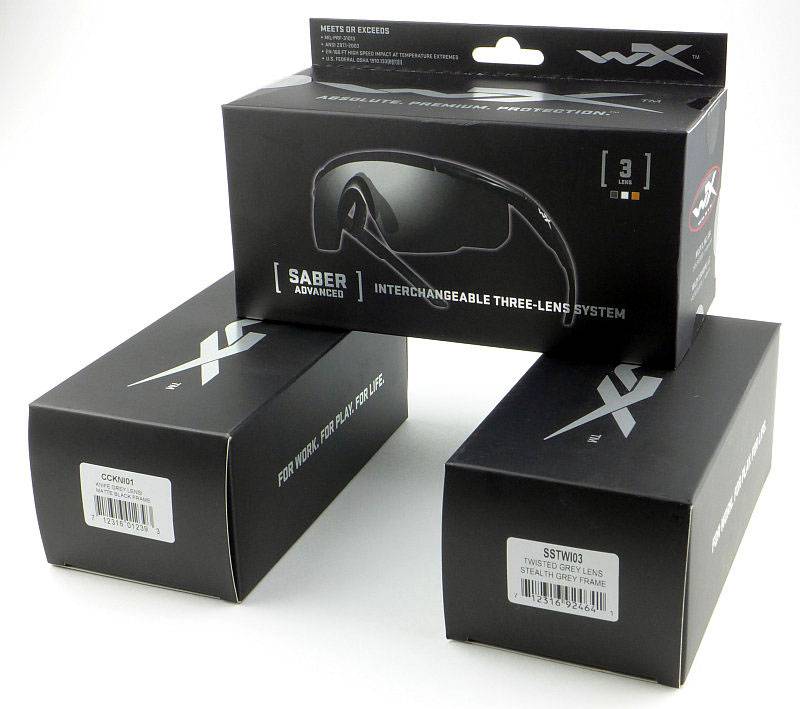
Taking a more detailed look at the Saber:
There are several options for the Saber, from individual lenses to a full set, and this is the full triple lens set.
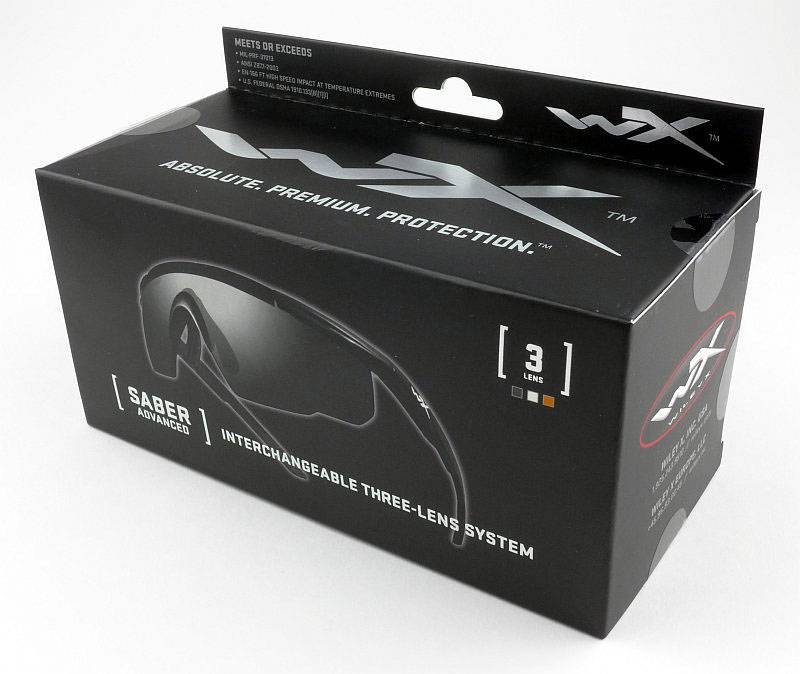
Everything is supplied in a Wiley X multi-lens case.
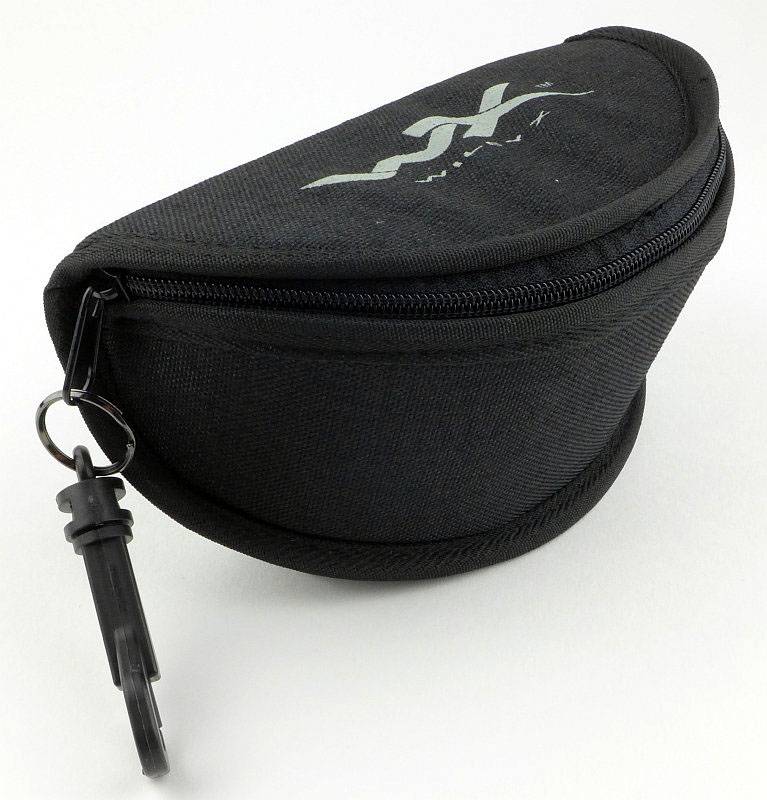
The case has two Velcro loops on the back for mounting to a belt/strap/etc.

Each component arrives wrapped in a protective plastic bag so it is in perfect condition when you first unpack it. After that, well, it is up to you.
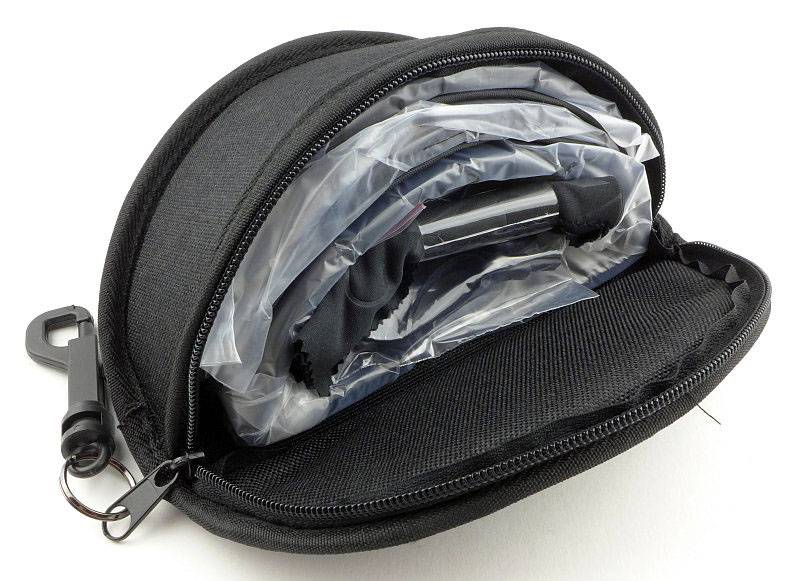
In the case is the Saber with grey lens, a clear lens, orange lens, strap, cleaning cloth and instructions.
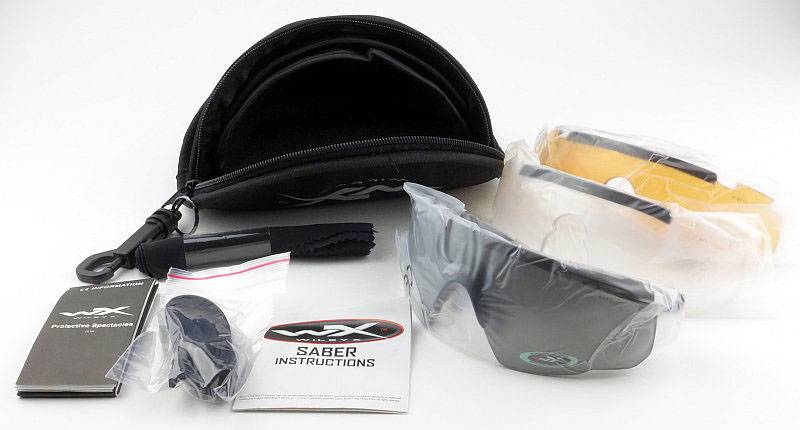
The set of lenses fresh out of its wrapping.
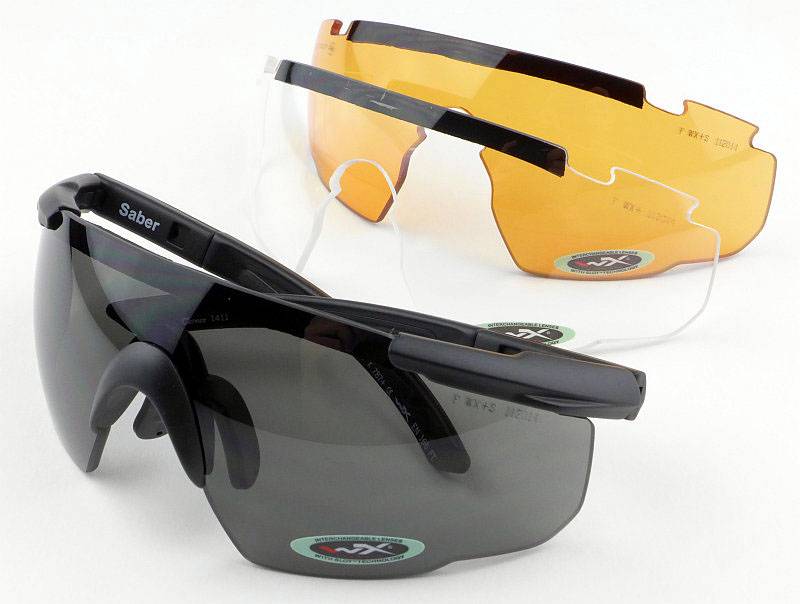
Each lens is a compound curve to fully wrap the eyes.
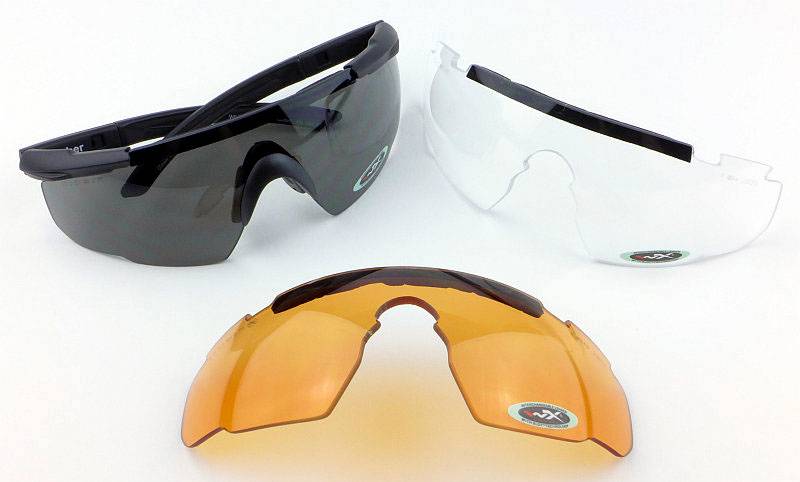
Taking a closer look round the Saber here it is from the front with arms folded.
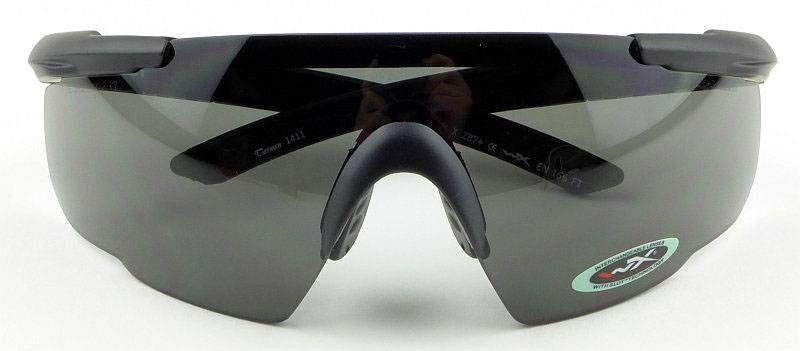
And arms unfolded.
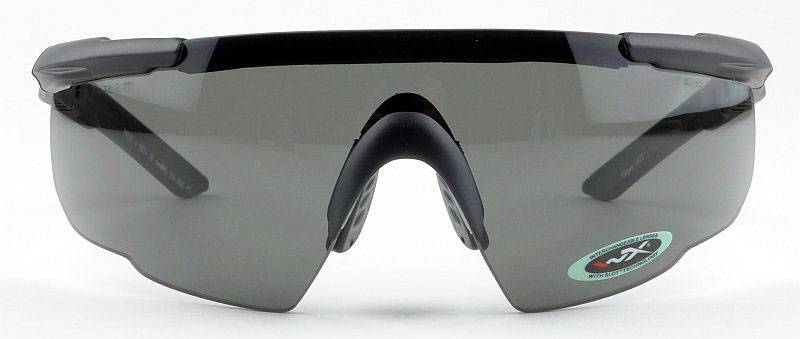
From the side.
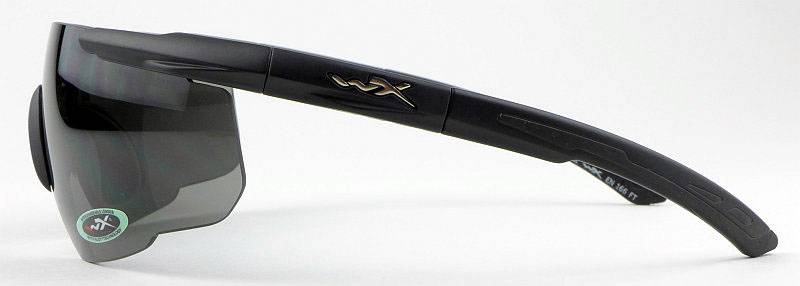
Then from the inside.
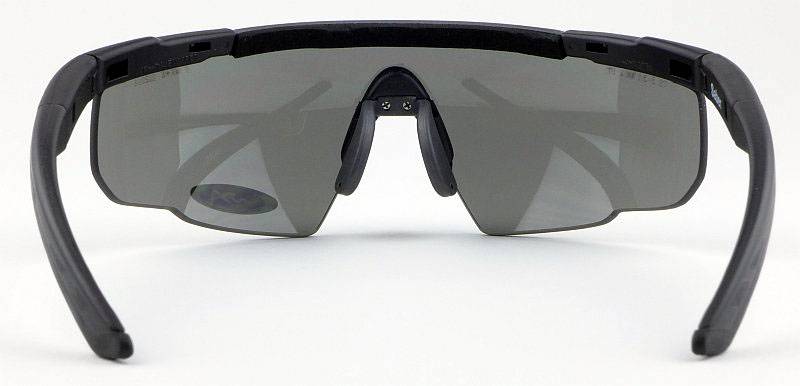
The nose piece has fully adjustable rubber covered pads. You simply bend them to fit.

On the inside of the arm, the model name is printed on the ‘active’ section of the arm.
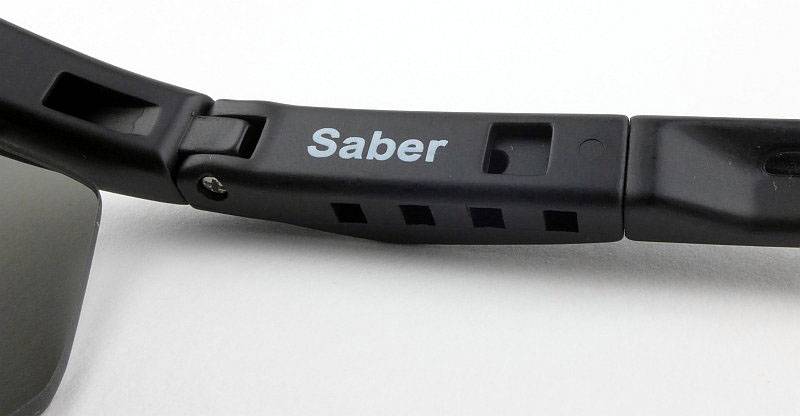
The first ‘active’ feature of the arm is that you can remove the rigid arm and replace it with a goggle style strap. First pull out the arm.
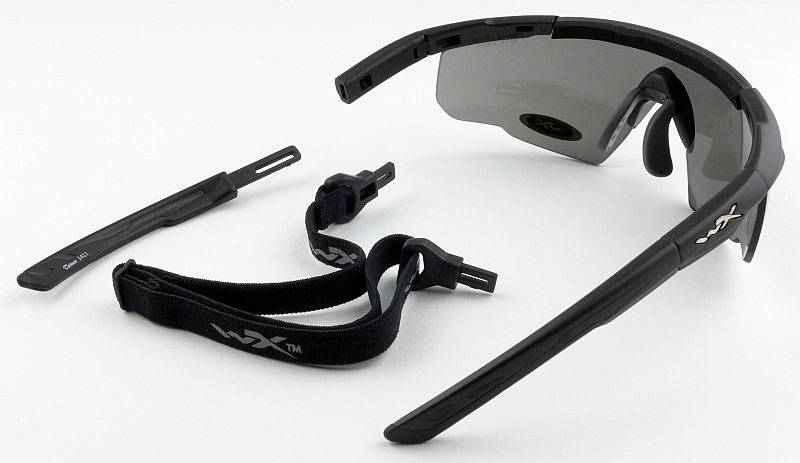
Plug in the first end of the strap.
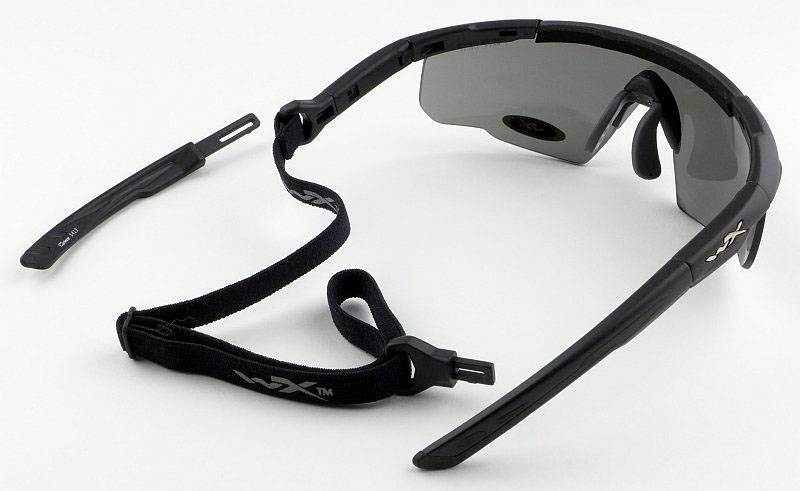
Repeat with the other arm and strap end.
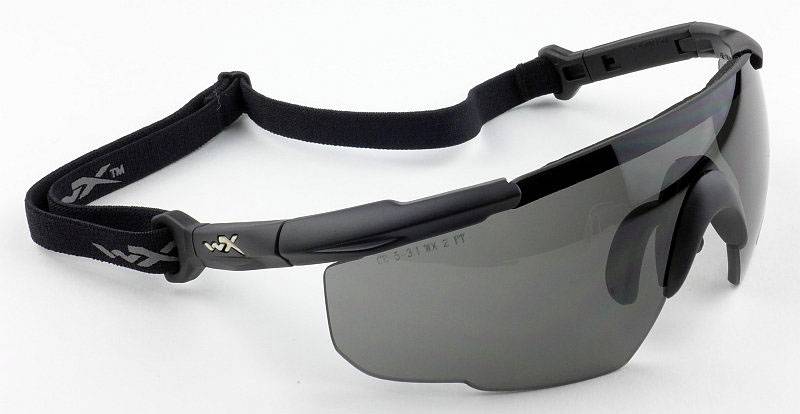
Instead of just pulling the arm out entirely, each arm has length adjustment to enable the best possible fit for each person.
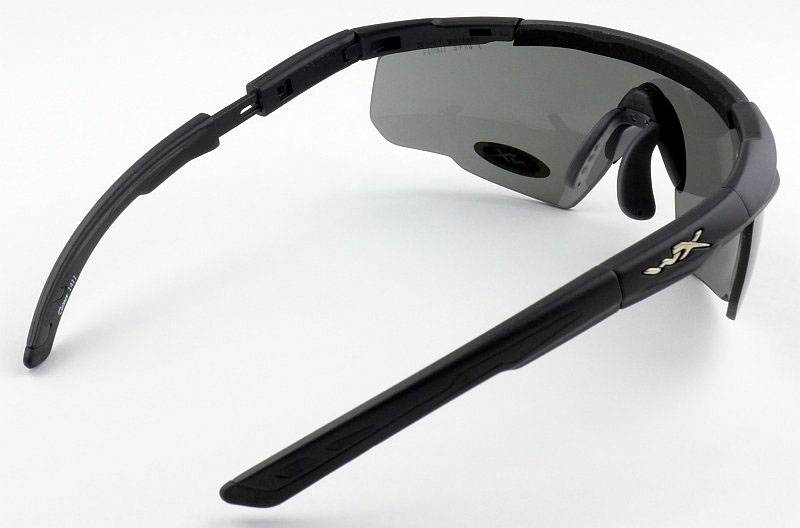
The arm has four ‘stops’.
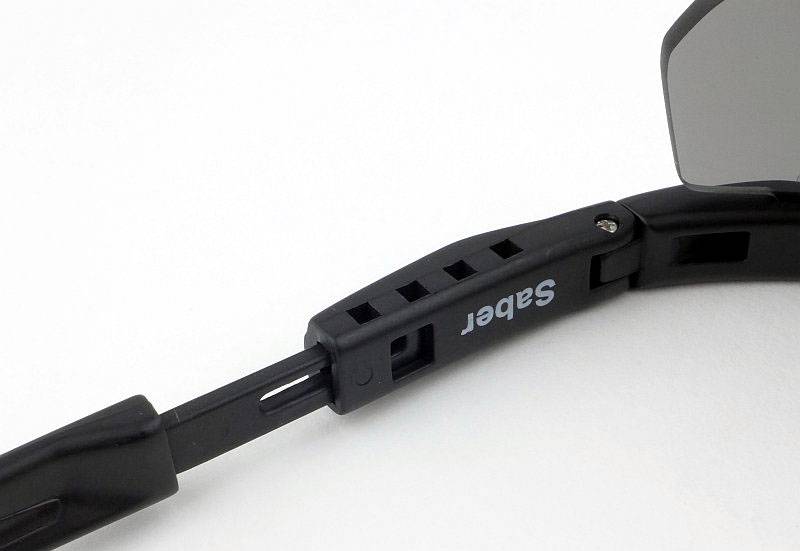
Being a frameless interchangeable lens system, you need to remove the arms and nose part and transfer these over to the lens you want to use. The fit of these parts is really quite firm.
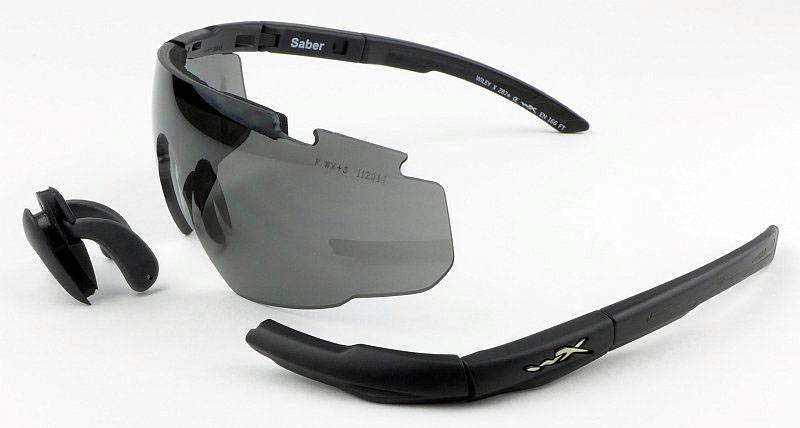
Here we are 2/3 transferred over to the orange lens, just the second arm to move.
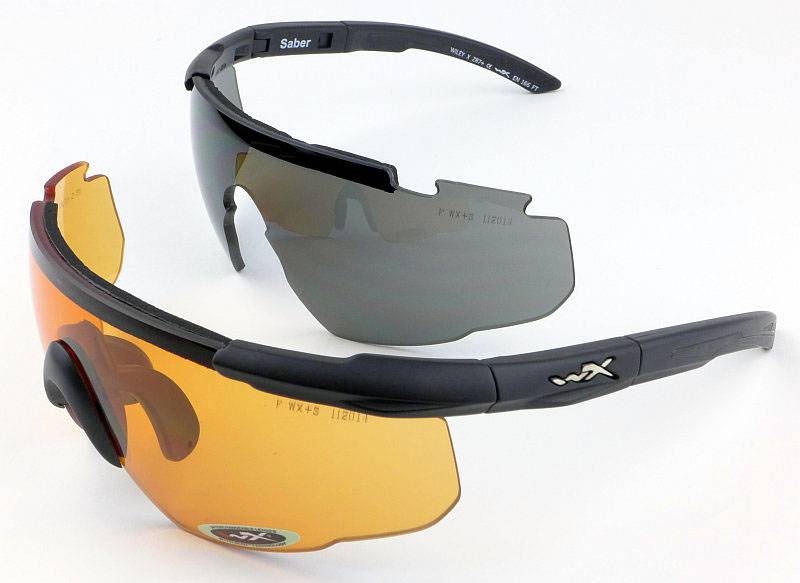
I found the easiest process was to pull the arm outward and then lift the hinge upward ensuring you don’t try to lever with the whole arm, instead applying pressure as close to the lens as possible. The arm then pops up.
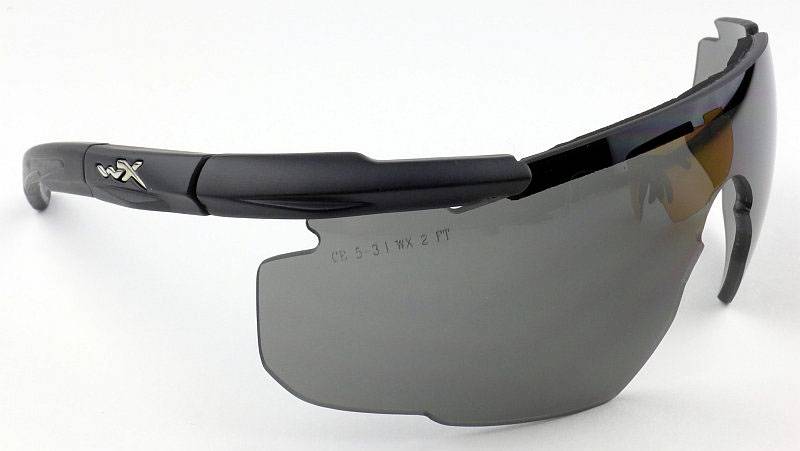
Fitting the arm was easiest doing this the other way round, first seating the hinge side of the mount, pressing the arm inwards and then pushing down on the mount.
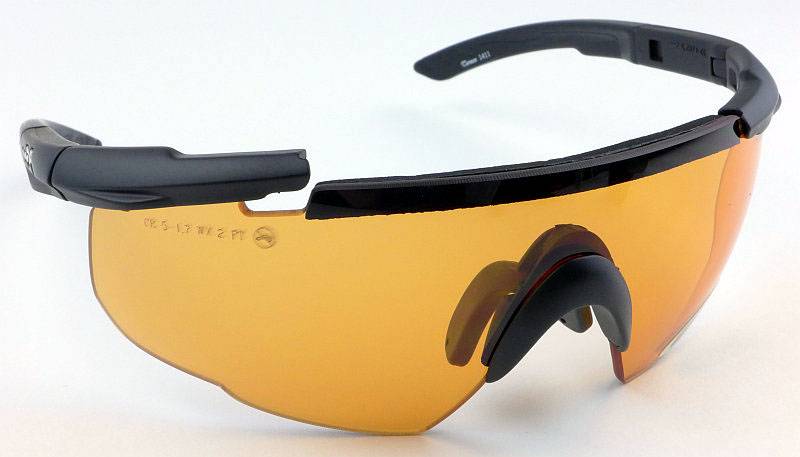
The clear lens almost disappears in the photo despite one of the Saber’s special features. The Sabre has the thickest lens, at 3mm thick, I’ve ever come across. This gives it probably the highest protection rating for any glasses of this type. With the bare lens you can see this thickness at the nose cut out.
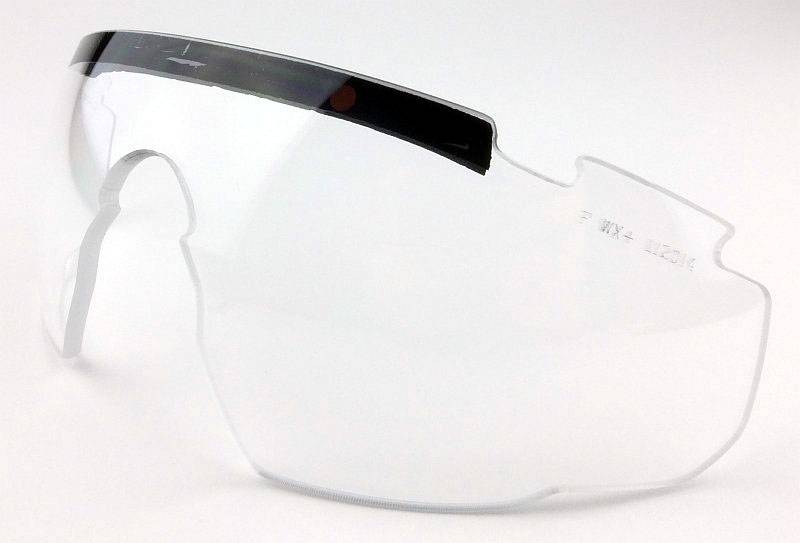
Looking closer to where the brow foam padding is attached you can see the machining marks in the lens edge.
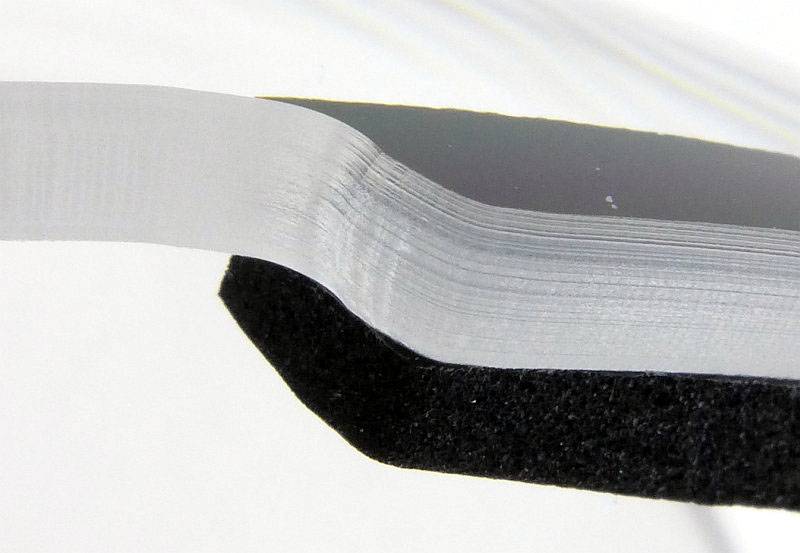
And next to a ruler with mm graduations.
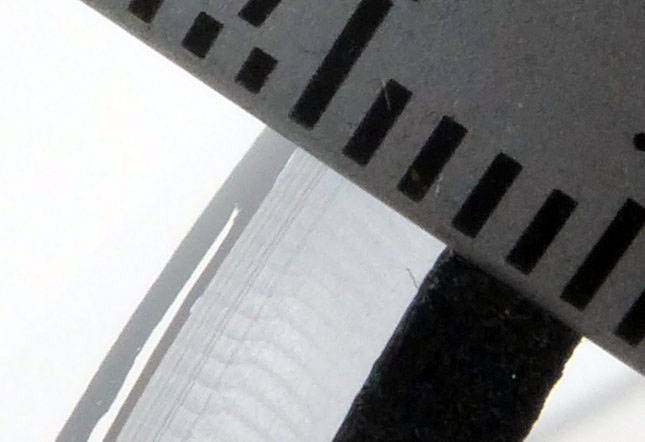
Taking a more detailed look at the Twisted Stealth Grey:
The Twisted model originally came in a black frame, but with more demand for grey, Wiley X have released a special ‘Stealth Grey’ version.
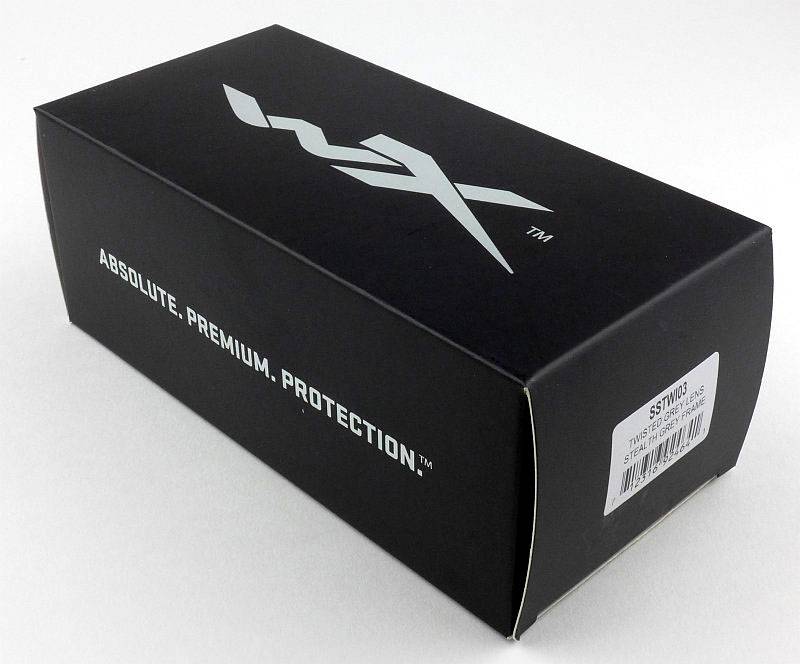
With no additional lenses to carry, the case for the Twisted is the Wiley X standard case. You also get a sticker in the box.
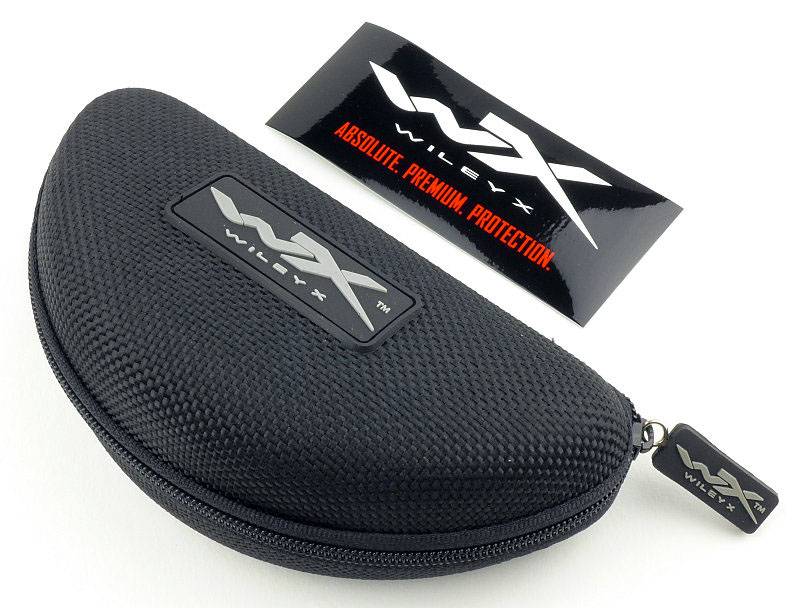
Inside the case are the plastic wrapped glasses, a cleaning cloth, information leaflet and a neck strap.
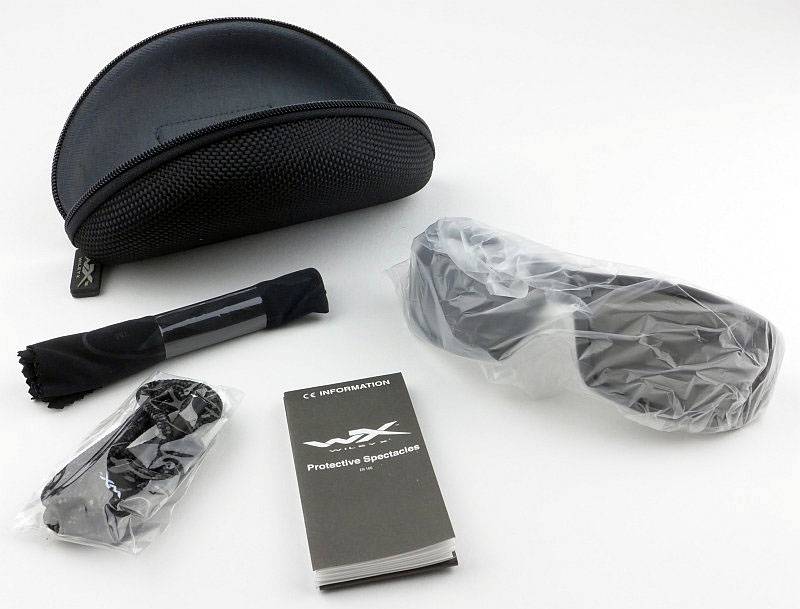
Getting rid of some of the plastic wrap for a better look.
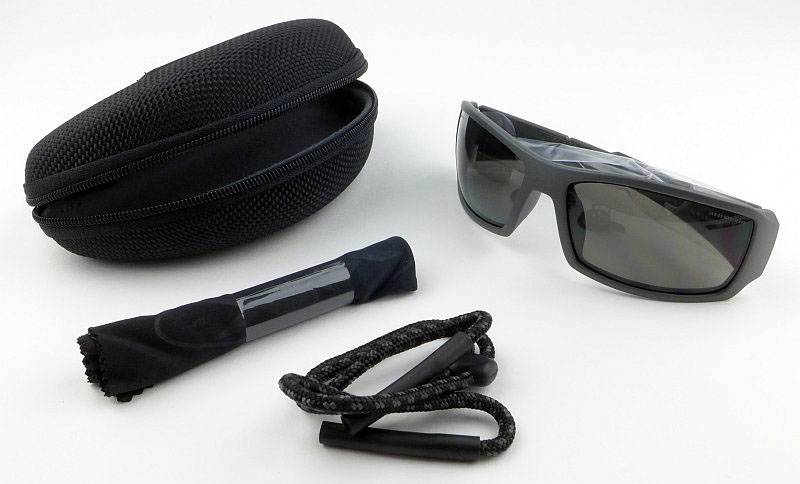
Taking a closer look round the Twisted here it is from the front with arms folded.
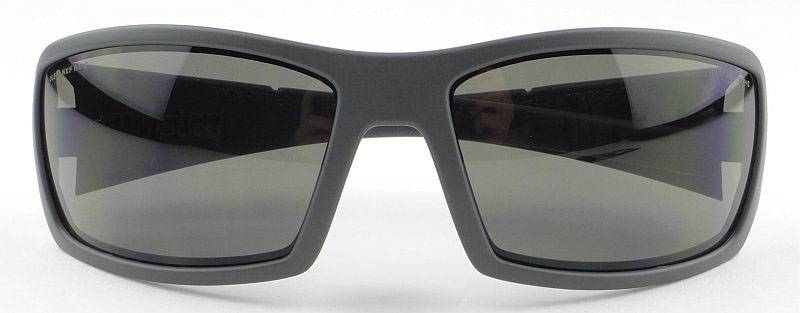
And arms unfolded.
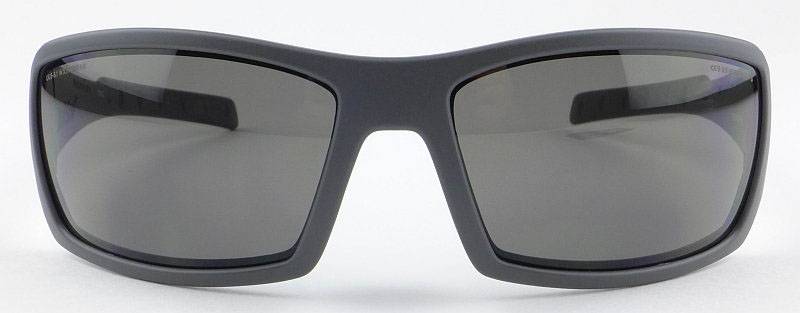
From the side.

Then from the inside.
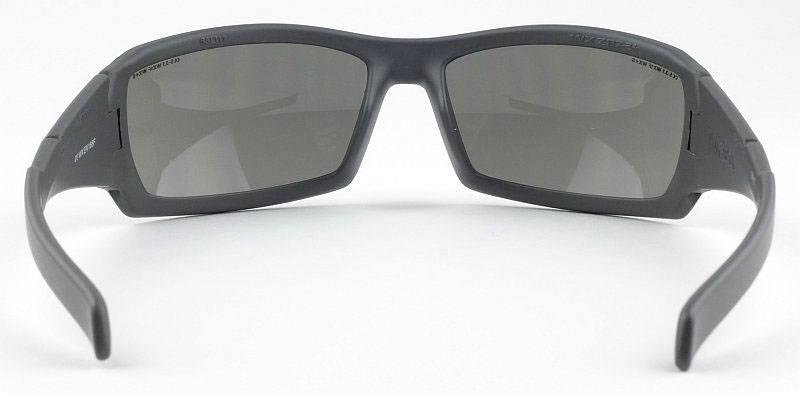
The arm is wide at the hinge which helps shade the wearer from light and debris coming from the side.
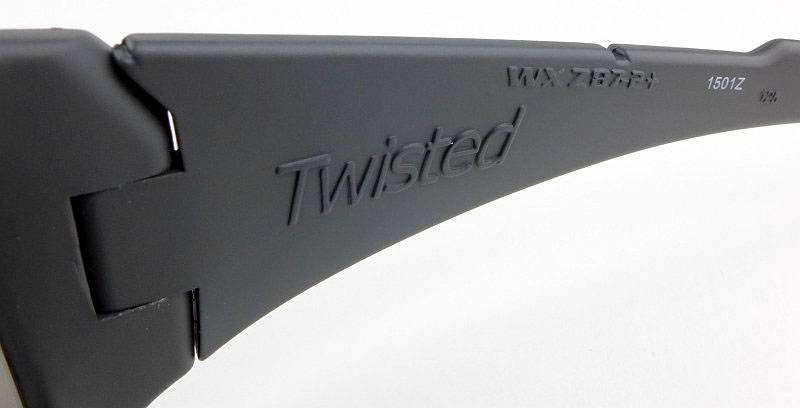
A detail of the hinge.

On the Twisted, the nose bridge is a fixed, moulded design. The surfaces are all rounded with no corners to dig in.
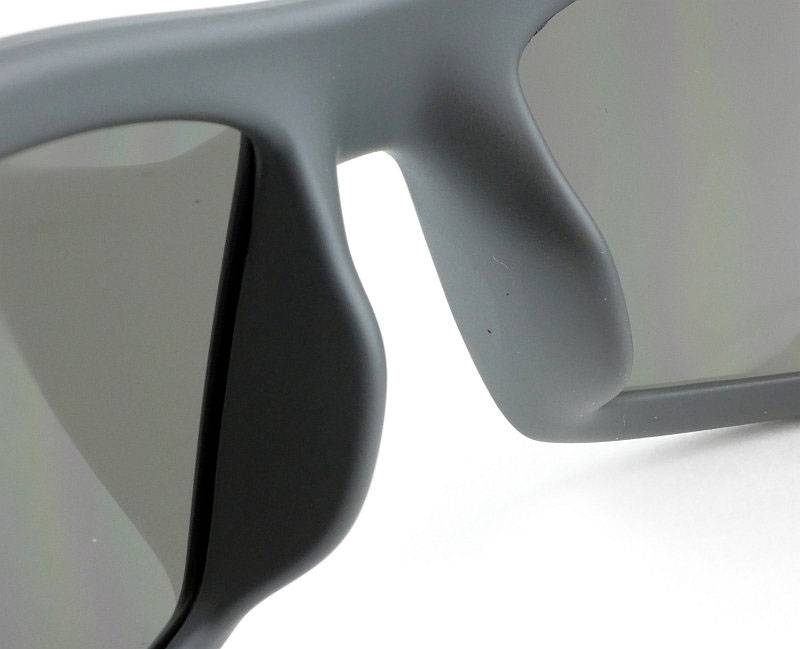
Taking a more detailed look at the Knife:
The last in this set is the Knife which features Wiley X’s facial cavity seal.

As well as the cased glasses and sticker, the Knife comes with an instruction leaflet for the facial cavity seal.
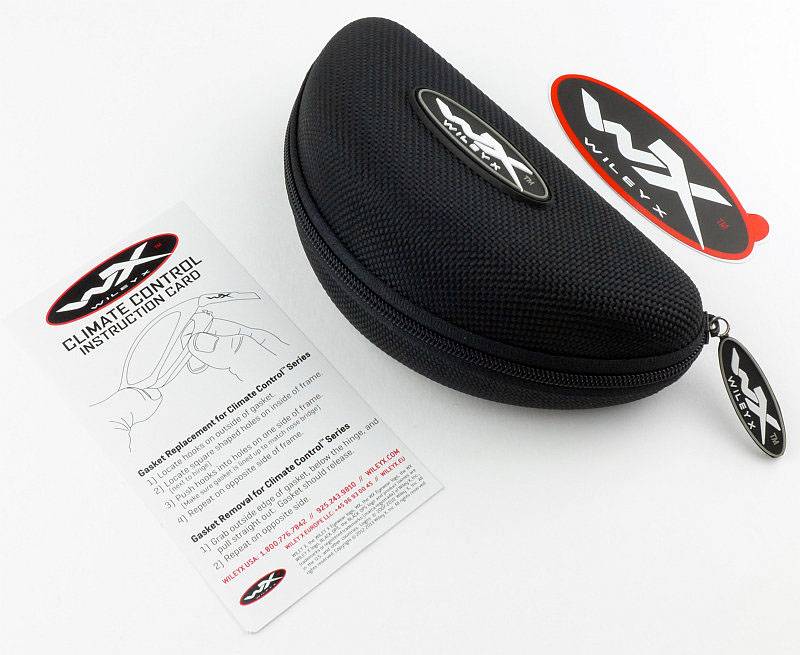
With the Knife you get a cleaning cloth, neck strap, and T-bar ‘goggle’ strap (more on that later).
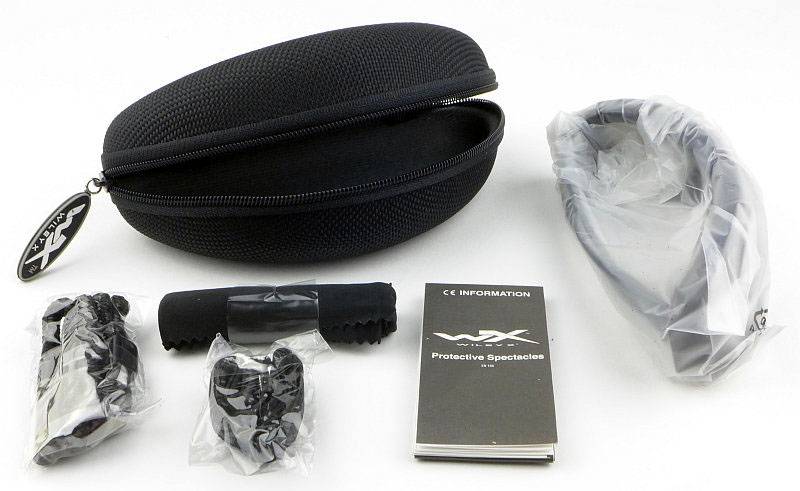
Everything unwrapped.
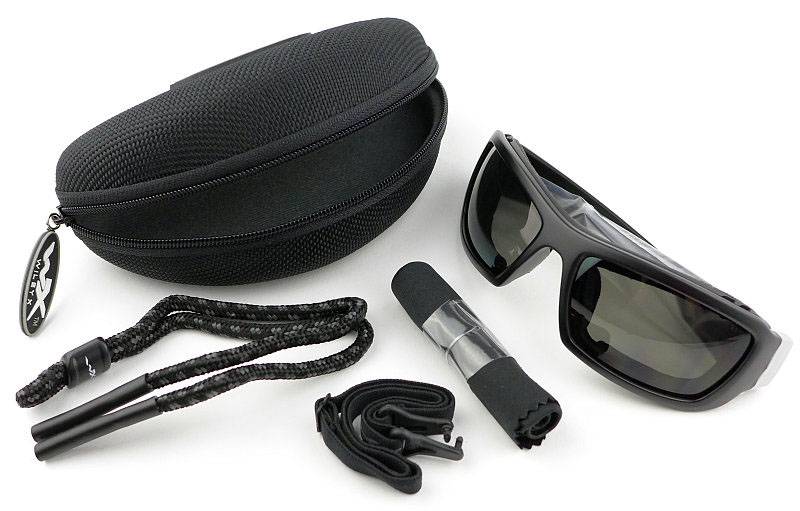
Taking a closer look round the Knife here it is from the front with arms folded.
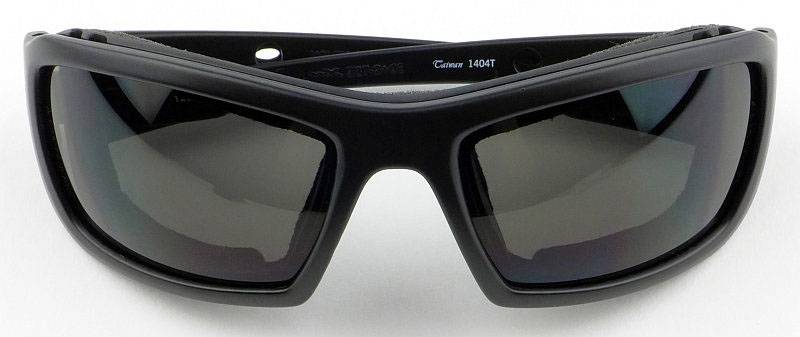
And arms unfolded.
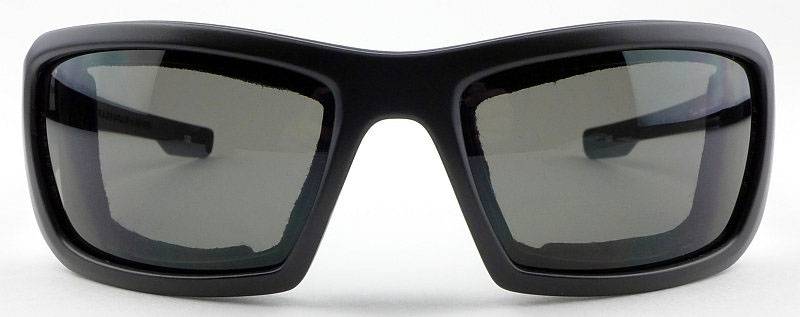
From the side.
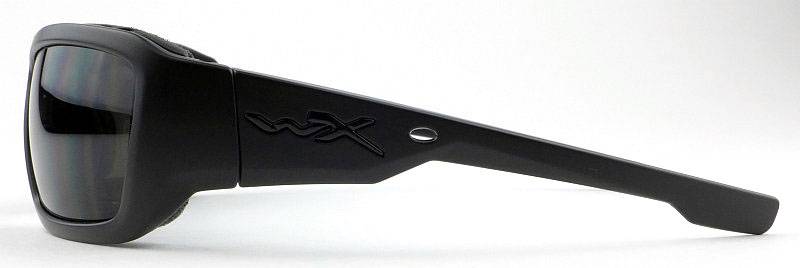
Then an inside view to show the facial cavity seal insert.
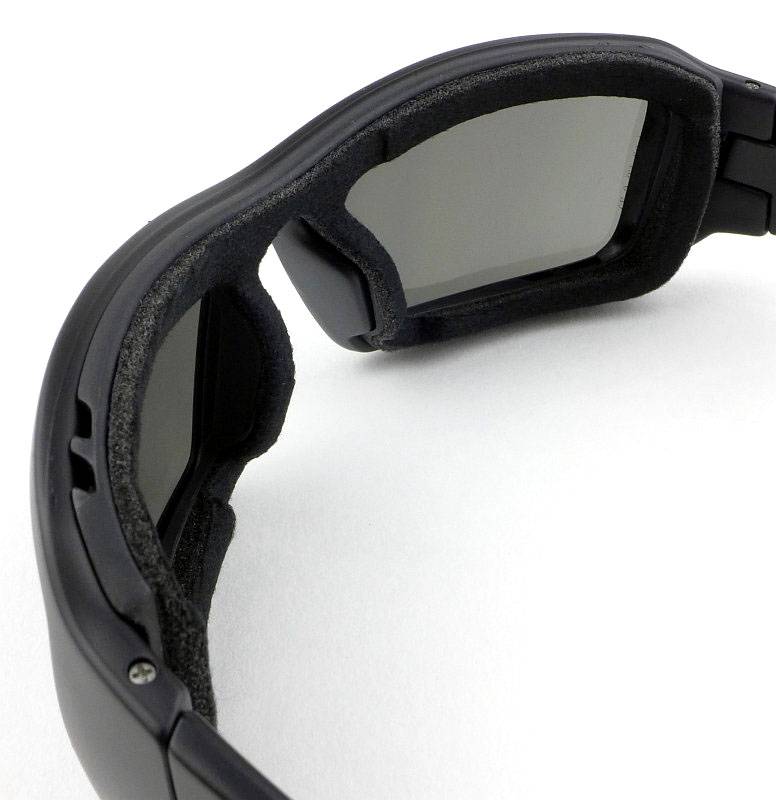
The Knife’s hinge.
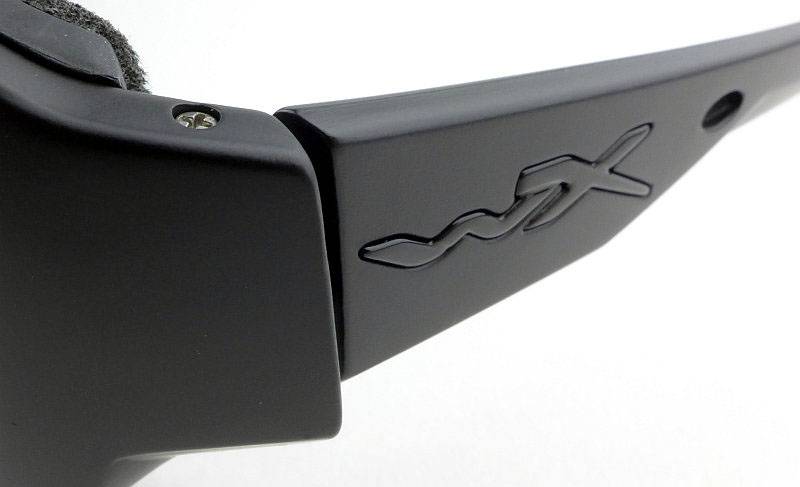
Each arm has a mounting hole for the T-bar strap system. This is a strap to hold the glasses firmly onto the face. With the facial cavity seal, these glasses become almost goggles, so this system makes perfect sense as it keeps the seal good.
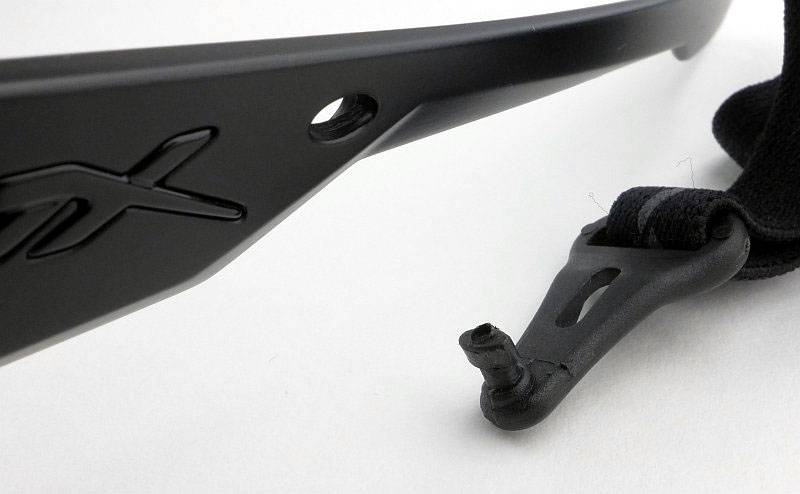
The T-bar strap fits in pointing downwards.
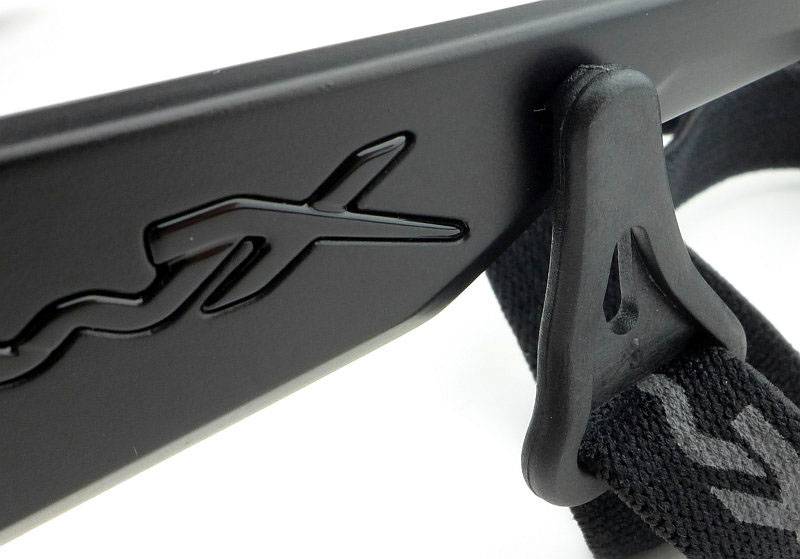
Then rotates back to lock in place. You can only release the strap by rotating the mount back down to the previous position.
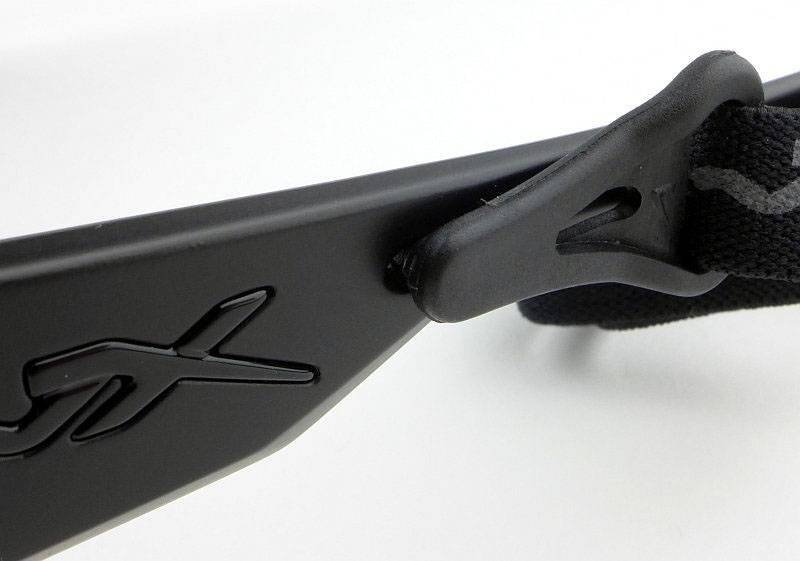
Inside the arm you can see the T-bar in the locked position.
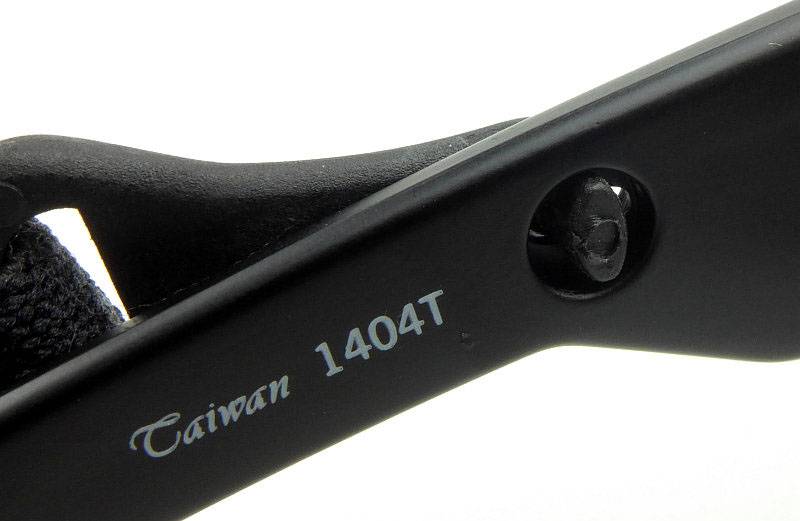
Here the knife has the goggle strap fully fitted.
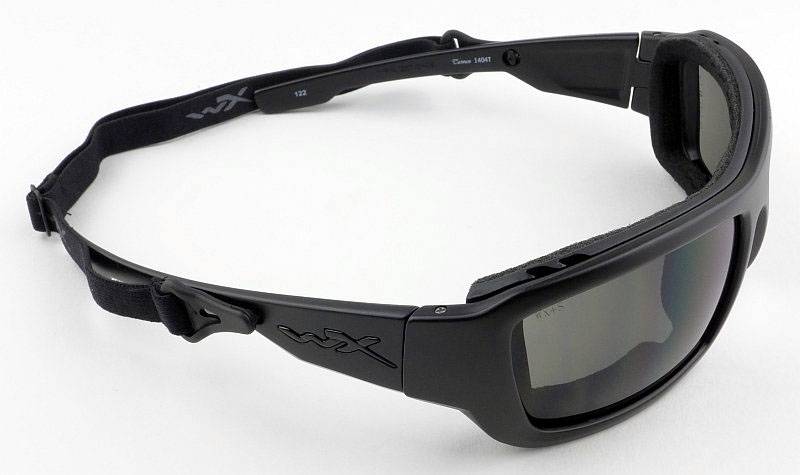
It is possible to remove the facial cavity seal for cleaning or to use the glasses without the seal. There are times when the extra ventilation is needed.
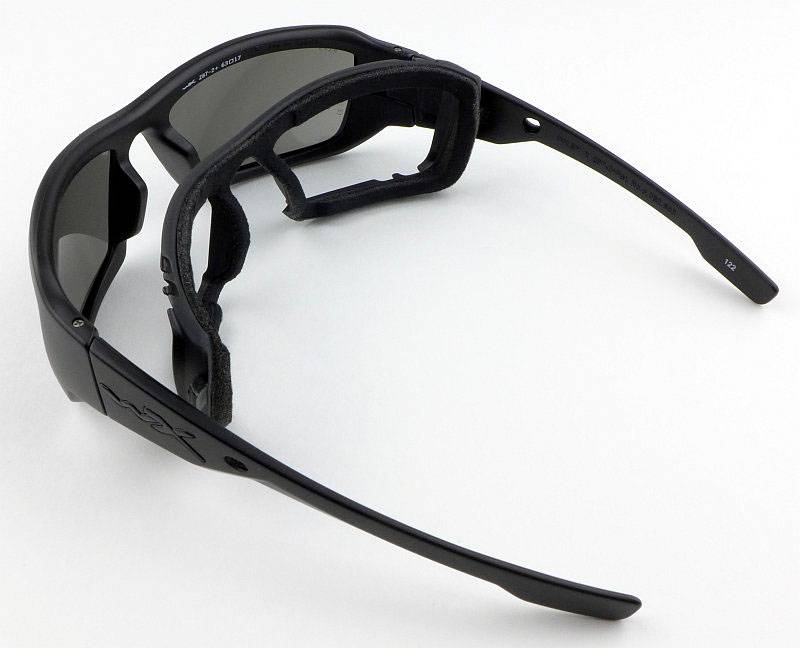
The seal is specific to the model and is labelled for the Knife.
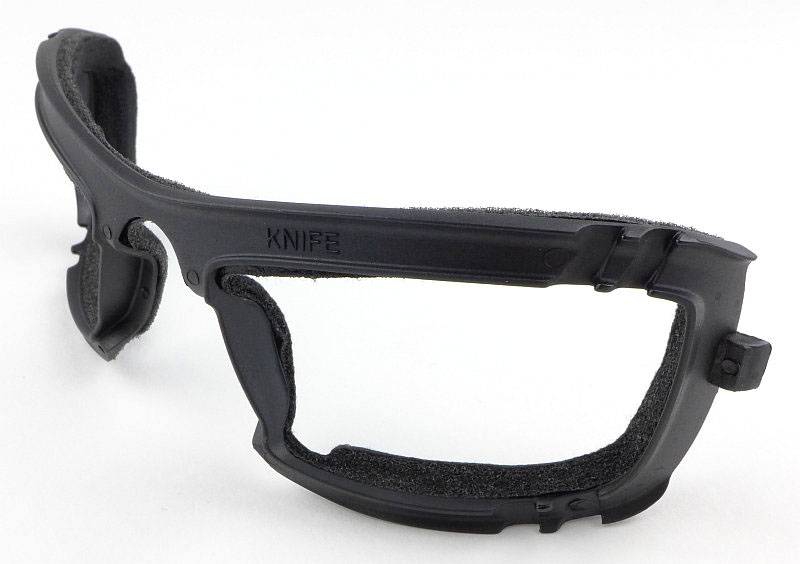
Here is the Knife without the seal.
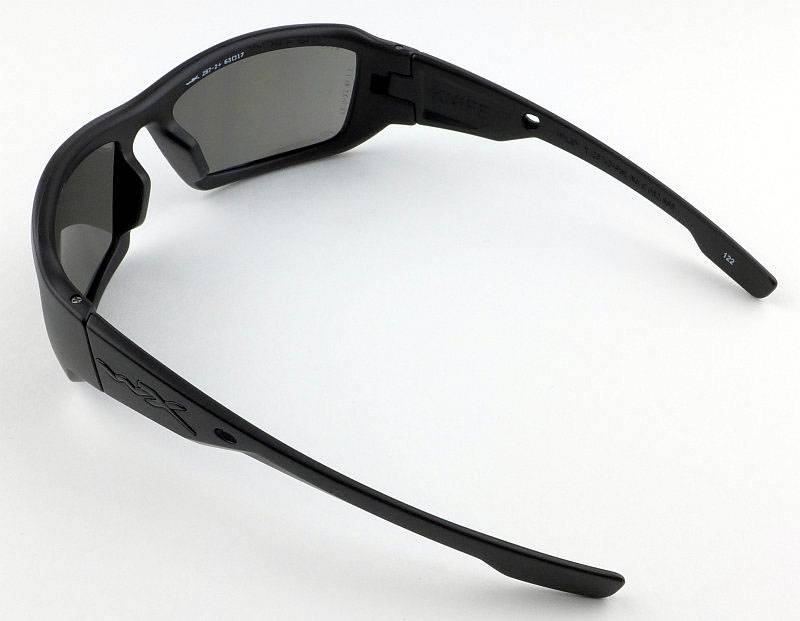
The facial cavity seal has a soft foam edge to fit closely to the face.
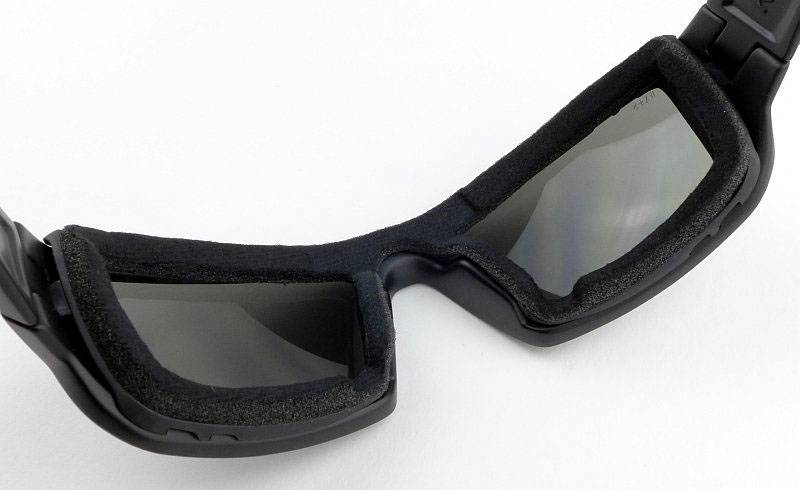
Comparing the three:
We’ve spent some time looking at each one in detail, now a first quick comparison series.
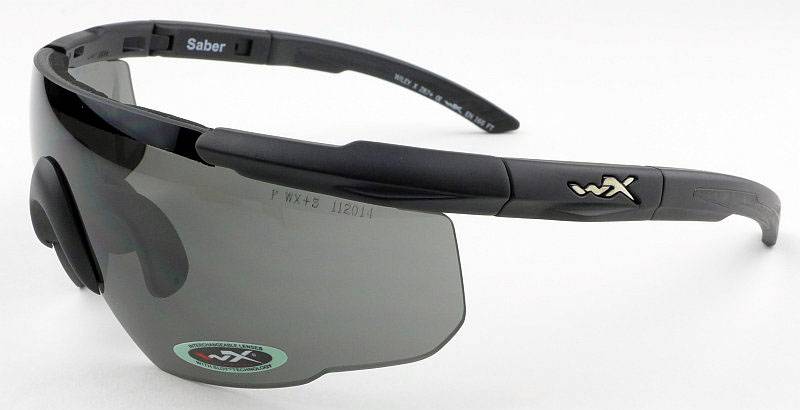
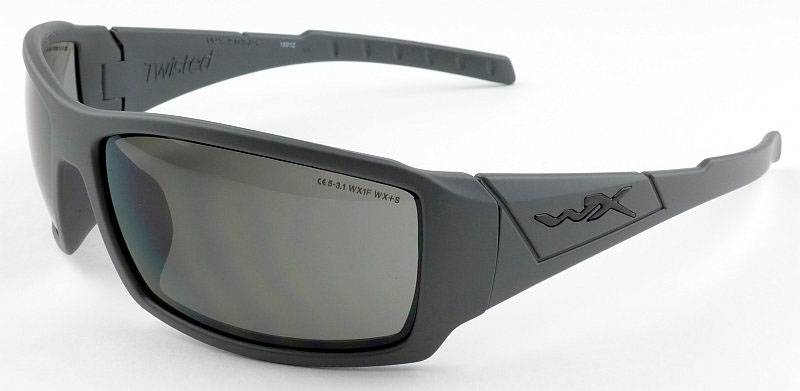
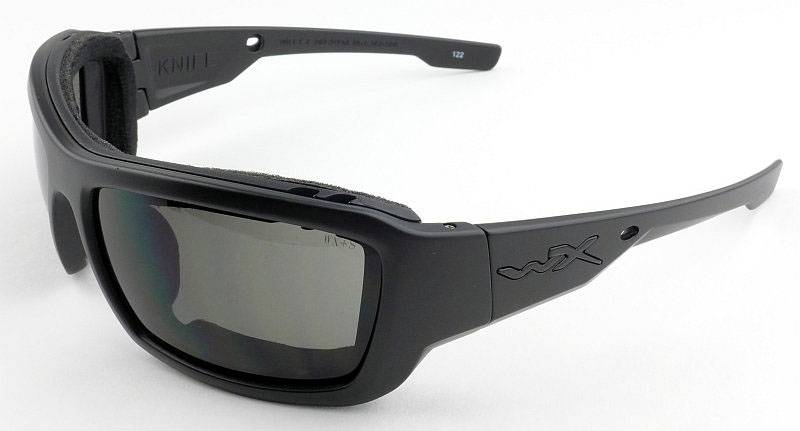
And now with each one on a display head:

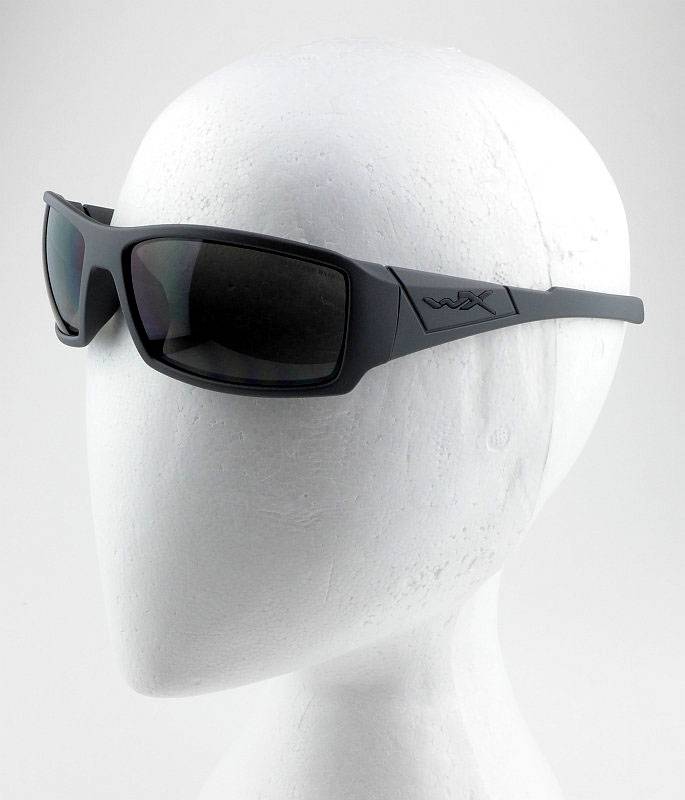
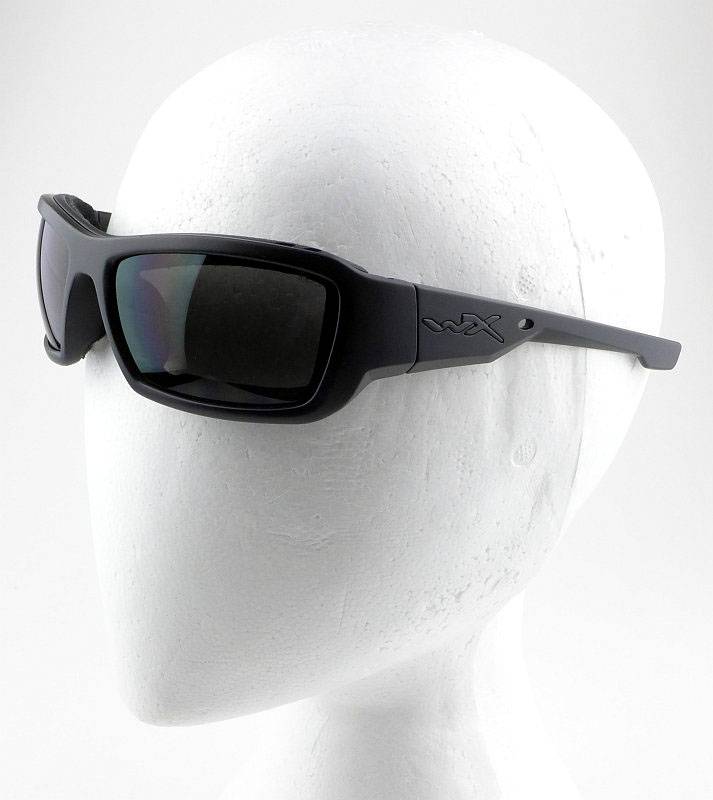
Troubleshooting
This section is included to mention any minor niggles I come across during testing, in case the information helps anyone else.
The standard neck straps that were supplied with the Twisted and Knife both failed with the rubber tubing splitting.
From the moment they were fitted there appeared to be stress lines in the rubber.
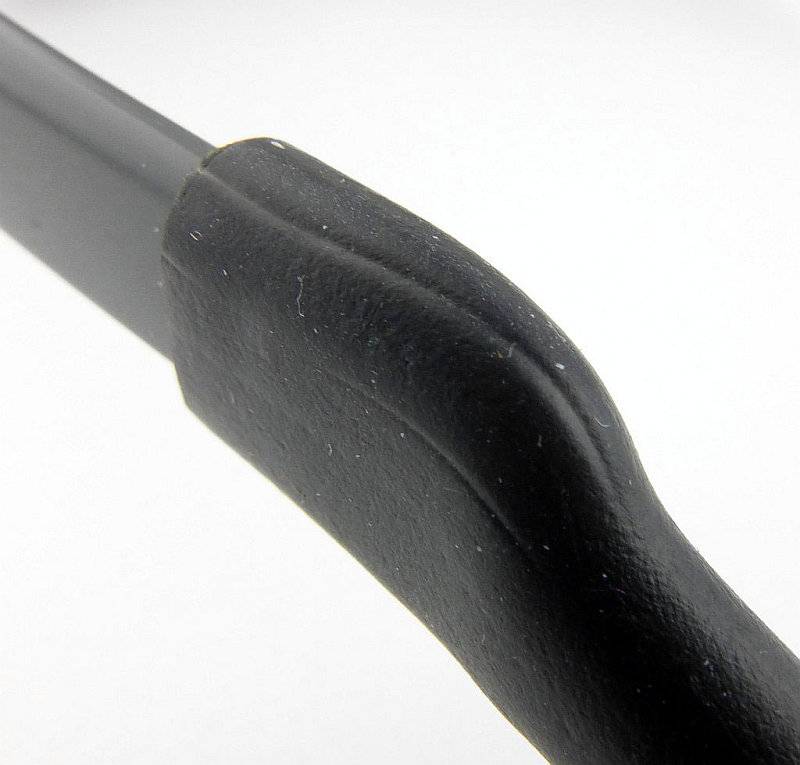
This line turned into a split.
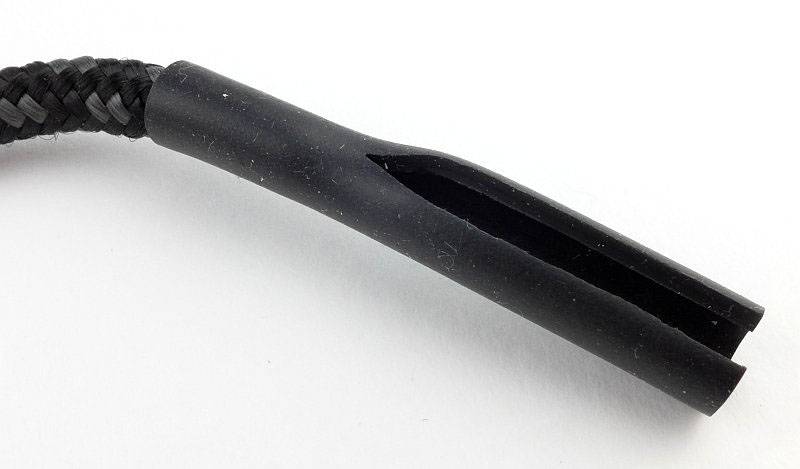
Altogether I’ve had three of these straps, and all three have split.
As per the description of this section, this information is provided in case anyone else finds a similar ‘issue’ that might be fixed in the same way.
In use
Each of these Wiley X models was chosen to represent a different use or requirement, and provide an excellent representation of what Wiley X offer.
For the utmost in protection you need to choose a wrap-around lens as this does not reply on the frame, or how well individual lenses fit in the frame, for protection. You have a one-piece protector positioned over your eyes.
The Saber is exceptional in its lens thickness at 3mm and exceeds all the safety standards, military and civilian, for protective eyewear. It does this without any distortion to your vision. I am very sensitive to poor lens design and have used compound curvature lenses that distort the wearer’s view. The Saber has not caused any visual distortions or strange sensations at all.
The full wrap gives excellent all round vision well around your peripheral vision giving uninterrupted views, just like your uncovered eyes, but protected from bright conditions and flying objects. What this does mean is that you are not protected from glaring light such as low sun to your side which the arms of certain glasses would shade you from.
For use as shooting glasses or to guard against flying objects (not dust) the Saber will give you exceptional protection.
Adjustable arms allow the maximum comfort for most users. You also have a great deal of fit adjustment with the nose piece which can be bent to raise or lower the Saber and bring it closer or further from the face. Do not neglect this, you can get a fantastic fit and comfort by taking the time to adjust the nose piece, and don’t be afraid to experiment to find the optimum fit.

Of the three, the Twisted is the most conventional ‘fit’ with no actual adjustment. On this point, of course, unlike the Saber, the Twisted will not fit everyone, but Wiley X give you excellent size information for every model so you can look for those suitable for small, medium and large heads and also at the detailed specifications of lens width, arm length and bridge width to find your best fitting model.
The arms of the Twisted curve inwards to wrap around the head and provide a good level of grip to keep them in place. The entire frame flexes as you put them on, and acts like a spring to prevent sliding. Coupled with their light weight, this makes them some of the most securely fitting glasses I’ve used without creating hotspots and discomfort when wearing for extended periods.
With the lenses curving round, there is minimal frame visible in my peripheral vision, yet the wide arms protect from low-angle light coming in from the side. An excellent compromise, and one reason the Twisted has become my most worn of the three and great for driving as well as outdoor activities.
The Stealth Grey frame is also a bit different and it is good to have a break from the normal black.
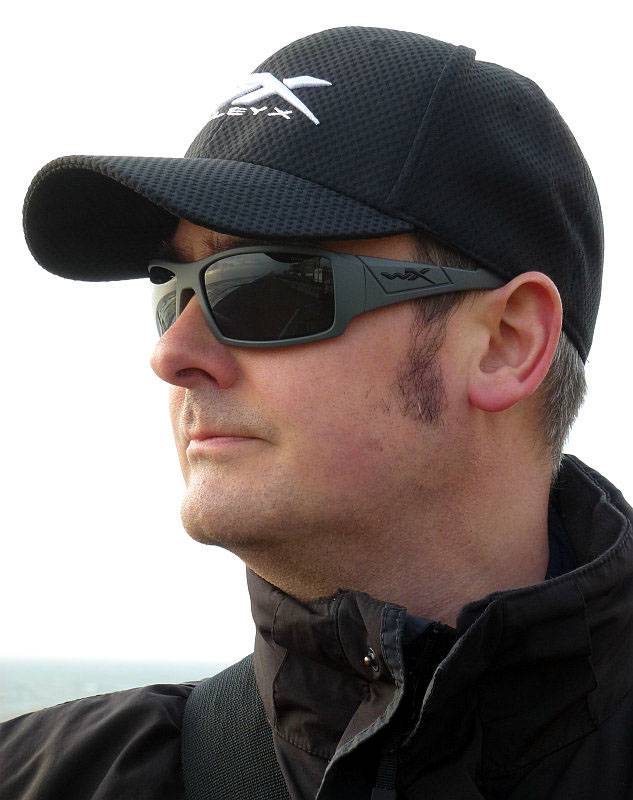
Last up in this group is the Knife. Its key feature to look at is the FACIAL CAVITY SEAL which also appears on several other models, but provides a very specific function.
When you first put on a model with the FACIAL CAVITY SEAL they feel more like goggles than glasses and it can take a little while to get used to. However as you get used to it, the feeling becomes more comforting and the benefits can be very obvious.
The FACIAL CAVITY SEAL is designed to protect you from wind, fine dust and pollen as well as blocking light that normally leaks in around the edges of sunglasses.
I’ve found that in situations where I would want to wear a peaked hat, the FACIAL CAVITY SEAL provides sufficient protection from the light that would normally leak in around the frame that I didn’t need the hat.
Where the FACIAL CAVITY SEAL really shines is in wind and dust protection. Though normal sunglasses provide a degree of protection from wind, once it is coming from the side this is far less effective. Add in dust and your normal sunglasses are not much use. The FACIAL CAVITY SEAL immediately shields you from this and stops the blinking and squinting. You could use actual goggles, but Wiley X’s FACIAL CAVITY SEAL gives you the protection of goggles in a pair of sunglasses.
You also have the option of removing the seal and using the sunglasses as normal sunglasses. This is crucial as they do also come with some of the issues of goggles.
Although the FACIAL CAVITY SEAL has some venting built in, yes, just like goggles you do get fogging. I found that this was particularly bad when driving (due to the lack of airflow), and other situations where I was hot and there was little or no airflow.
When it is windy, the small vents seem to cope with preventing fogging very well, but once conditions are calm, you are at the mercy of the temperature of the sunglasses and your immediate humidity (a nice way of describing the body’s output of moisture).
Knowing that when using the FACIAL CAVITY SEAL you can get fogging is just something you need to work with. When the situation demands the extra protection, the Knife delivers exactly that.
Remember though, that unlike goggles, you can remove the seal and they become normal sunglasses.
Due to hyper sensitivity to light, I wear sunglasses 100% of the time during daylight hours when I’m outside, so get a lot of wearing time. I would never consider having only one pair of sunglasses and have many different types and styles. Just as most people have many shoes and jackets to suit different situations, I consider sunglasses the same in that you benefit from a choice of different features. (I’m also a lens quality perfectionist)
The reason for explaining that is that now I’ve experienced it, Wiley X’s FACIAL CAVITY SEAL has become an essential part of my eyewear options.
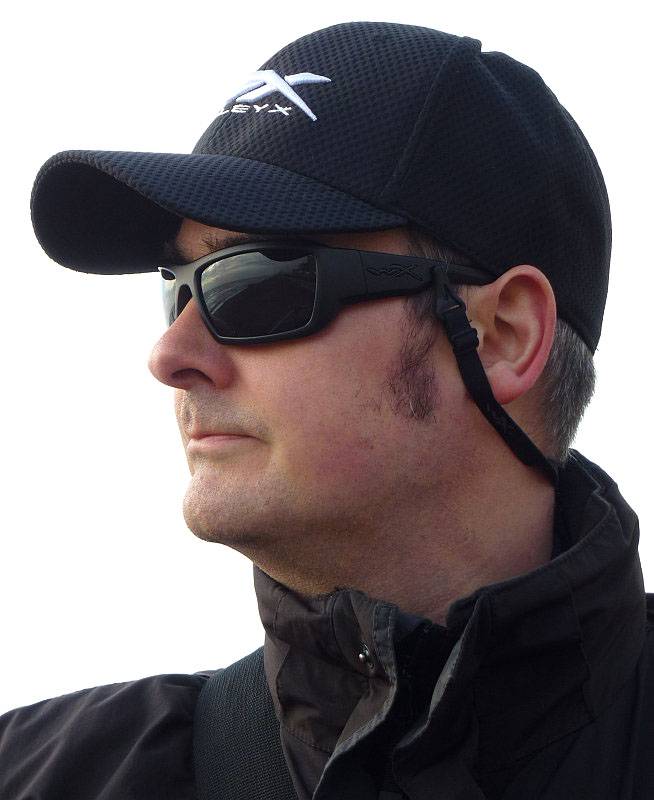
Sunglasses are not just sunglasses and are not just eye protection. These three different models give three very different experiences and features while ensuring your eyes are protected to standards above and beyond most requirements

Review Summary
| _______________________________________________ |
_______________________________________________ |
| Things I like |
What doesn’t work so well for me |
| _______________________________________________ |
_______________________________________________ |
| Saber – 3mm thick super tough wrap-around lens |
|
| Saber – interchangeable lenses |
|
| Saber – adjustable nose bridge and arms |
|
| Twisted – Lightweight, comfortable and secure |
Twisted – supplied neck strap failed |
| Twisted – Stealth Grey frame option |
|
| Knife – FACIAL CAVITY SEAL technology |
Knife – fogging in still conditions |
| Knife – T-bar retention system |
Knife – supplied neck strap failed |
